Welcome back to ITPro’s live coverage of PegaWorld iNspire 2024. It’s day-two here in Las Vegas and we have another exciting day to look forward to.
During today’s keynote presentations we will be hearing from Daniel Wenzel, SVP of Design Authorities at Deutsche Telekom, Jess Cuthbertson, executive, Customer Analytics & Decisioning at National Australia Bank (NAB), and Don Schuerman, CTO at Pegasystems.
Cuthbertson will be detailing how the NAB has applied a blend of data, creative experimentation, and Pega technology to drive a 40% increase in customer engagement in just under a year.
In the final presentation of this year's PegaWorld iNspire, Schuerman will be discussing what comes next for businesses after they’ve adopted AI, exploring the future of real-time optimization using AI and providing some more detail on Pegasystems' concept of the autonomous enterprise.
Good morning from Las Vegas! The opening keynote here at PegaWorld iNspire is set to kick off in roughly three hours. Over the course of the morning we will also be hearing from Katrina Fluss, supervisory program and management analyst at the US Department of Veterans Affairs; Jeff Frantz, VP of Data and AI at T-Mobile; and Kerim Akgonul, chief product officer at Pega.
While we wait for things to get started, why not check out some of ITPro’s recent Pegasystems coverage to get yourself up to speed on what the automation and low-code development specialists have been up to in the last year.
• Pega wants to provide AI for ideation – PegaWorld iNspire 2024 can be its launch pad
There's under an hour before Alan Trefler is set to take the stage and things are still fairly quiet in the MGM Grand conference center.
A vapor wall with the tagline “It’s all building to this” marks the entrance to the keynote theater as a few attendees start to gather in the lobby area before they are let in.
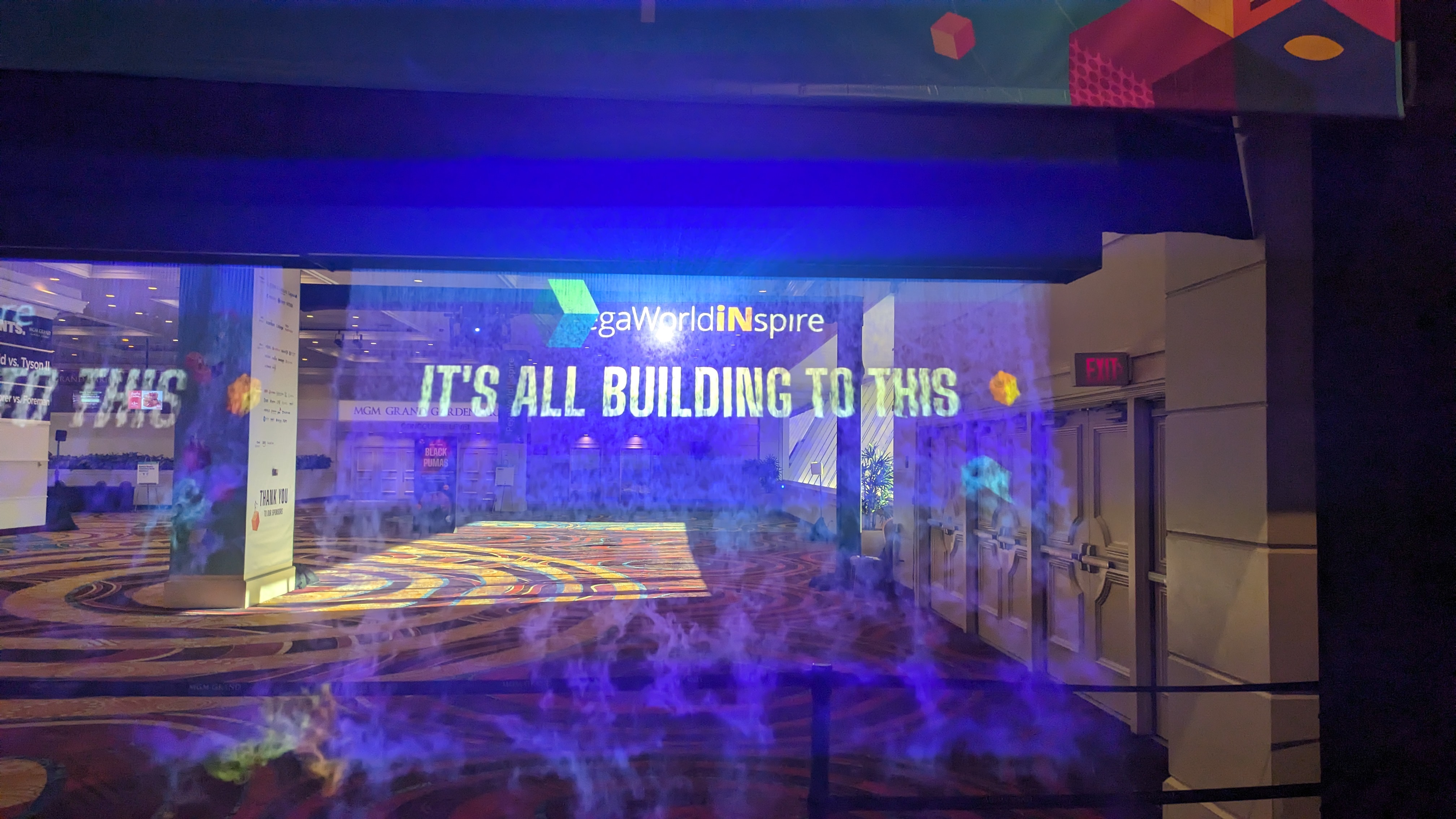
The buzz is starting to build in the lobby area as more attendees start to gather, but things are still relatively calm here at the MGM Grand.
I've been informed by a Pegasystems representative, we will be let into the auditorium at 8:45 PST.
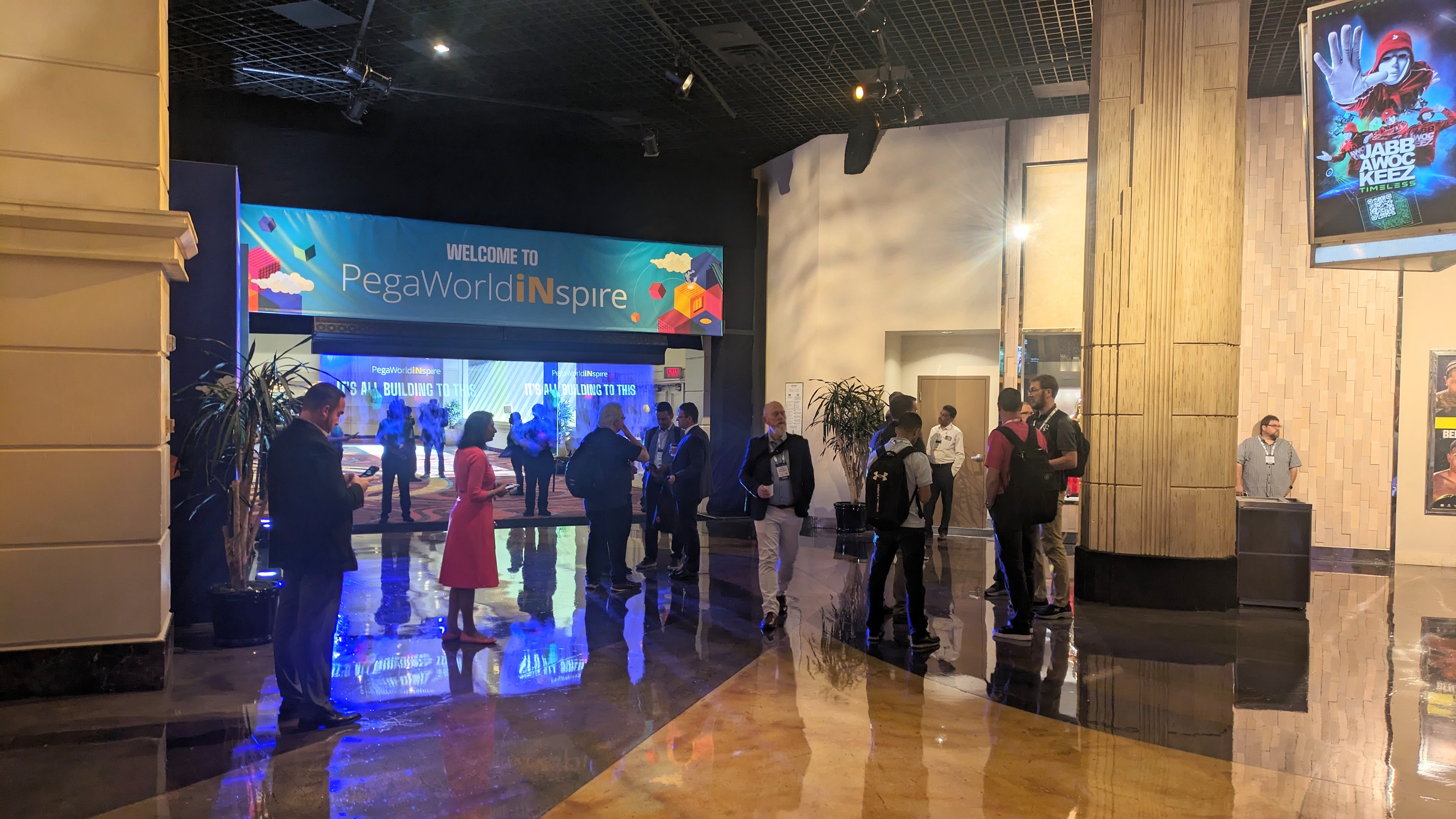
The excitement is really building now as a pretty large crowd has gathered outside the entrance.
And suddenly we’re let in and the rush ensues…
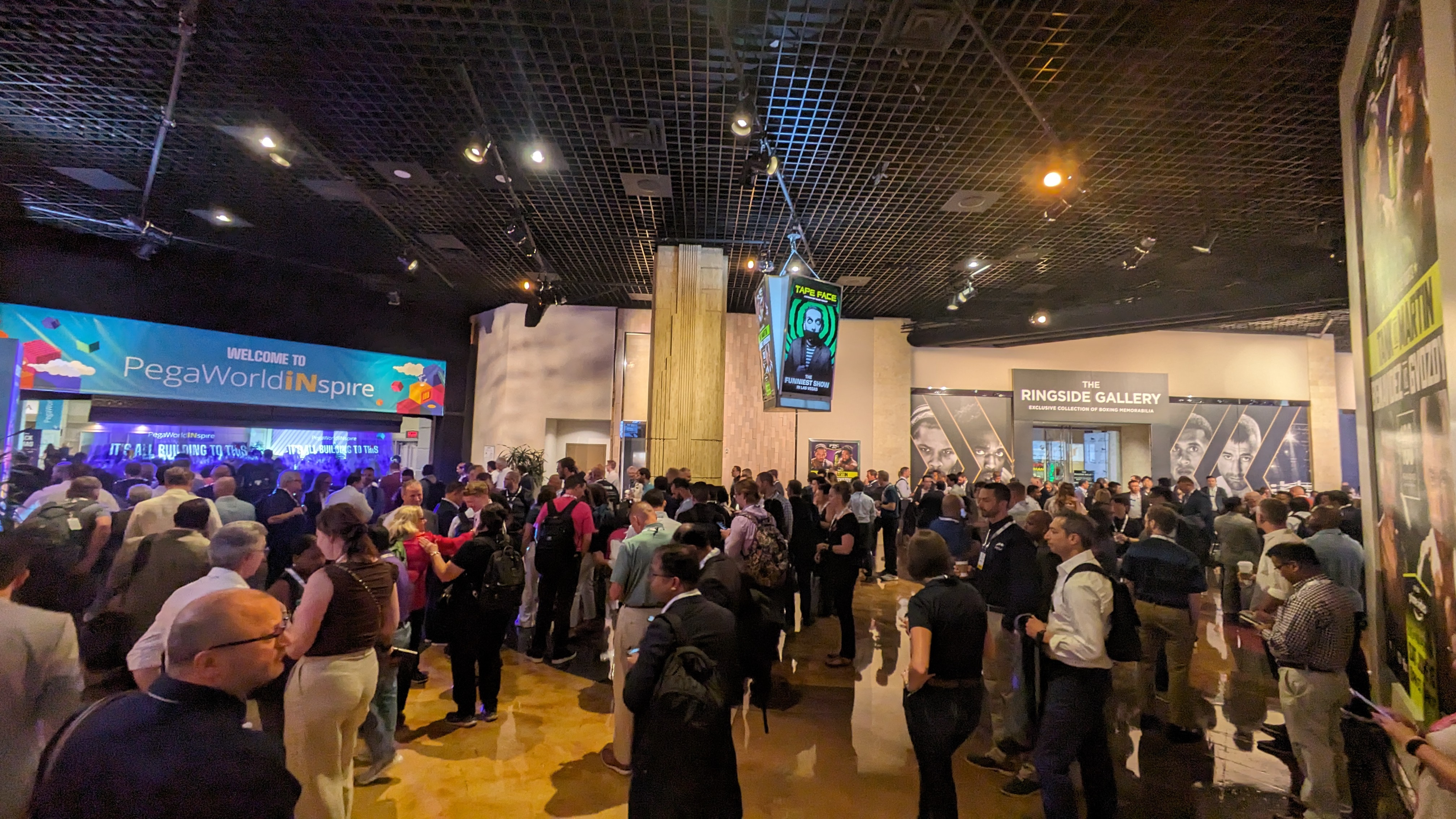
After being led into the theater with my fellow journalists via the same tunnel used by boxers during their ringwalk, we are in and the auditorium is starting to fill gradually.
The bulk of the crowd are still being held outside and so its only a slow trickle of delegates filing in at the moment, but I expect that to change rather quickly as we are under 15 minutes away from Pegasystems CEO Alan Trefler taking the stage.
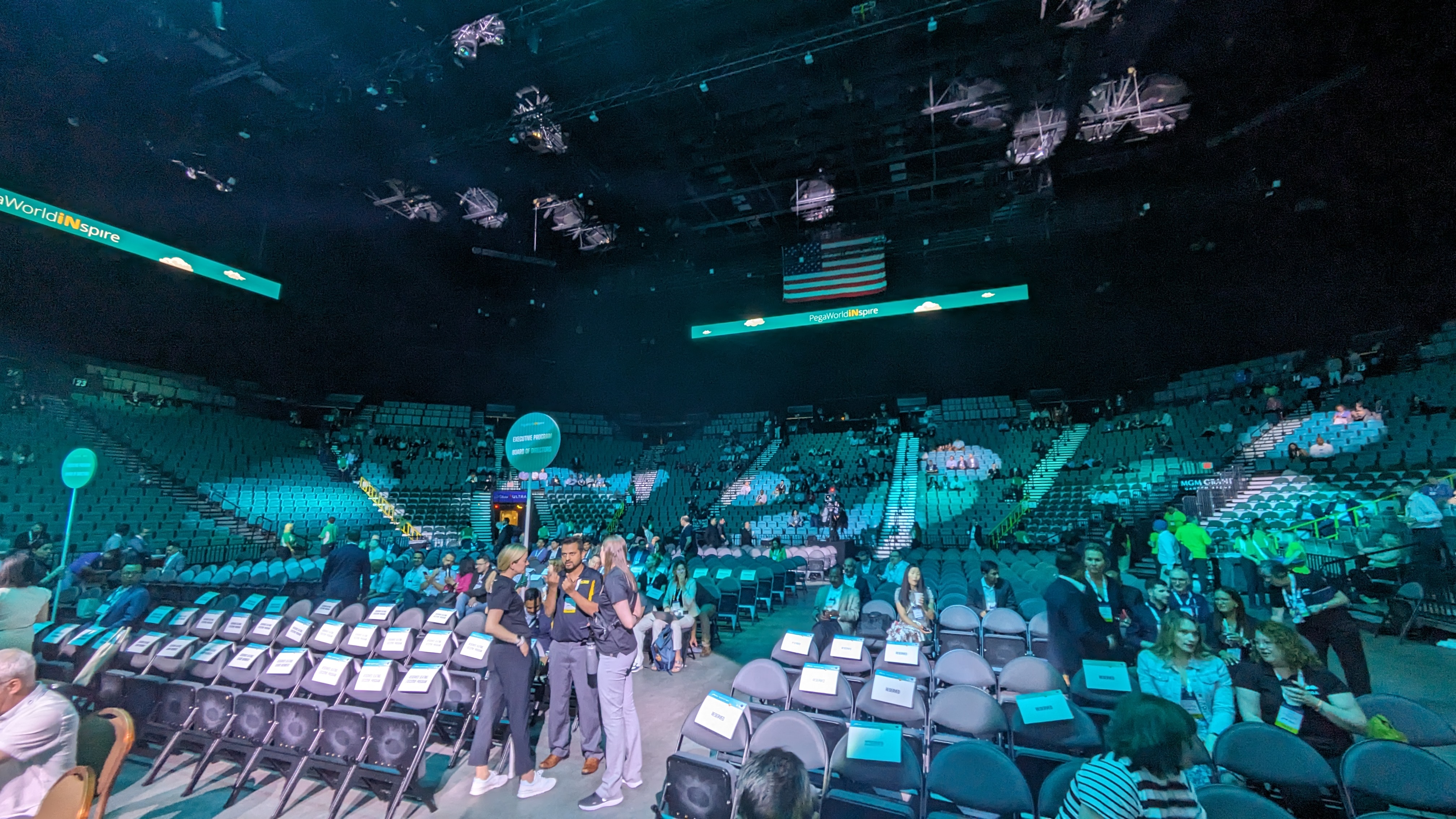
Trefler will be discussing what he sees as the innovation imperative that the generative AI boom has now imposed upon businesses. He will be looking at why he believes it will be essential for businesses to embed AI in its various guises into their workflows, and how Pegasystems is uniquely placed to power this AI-driven innovation.
We have attendees from all over the world here in Las Vegas for PegaWorld iNspire and as such a QR code linking to the Kudo live transcription app is being splashed onto the keynote screen.
With just minutes to go before things get started, the theater is almost full and the music is becoming gradually more intense. A voice rings out on the PA asking the audience to take their seats and silence their mobile devices, and Walking on Sunshine by Katrina And The Waves blares out of the speakers.
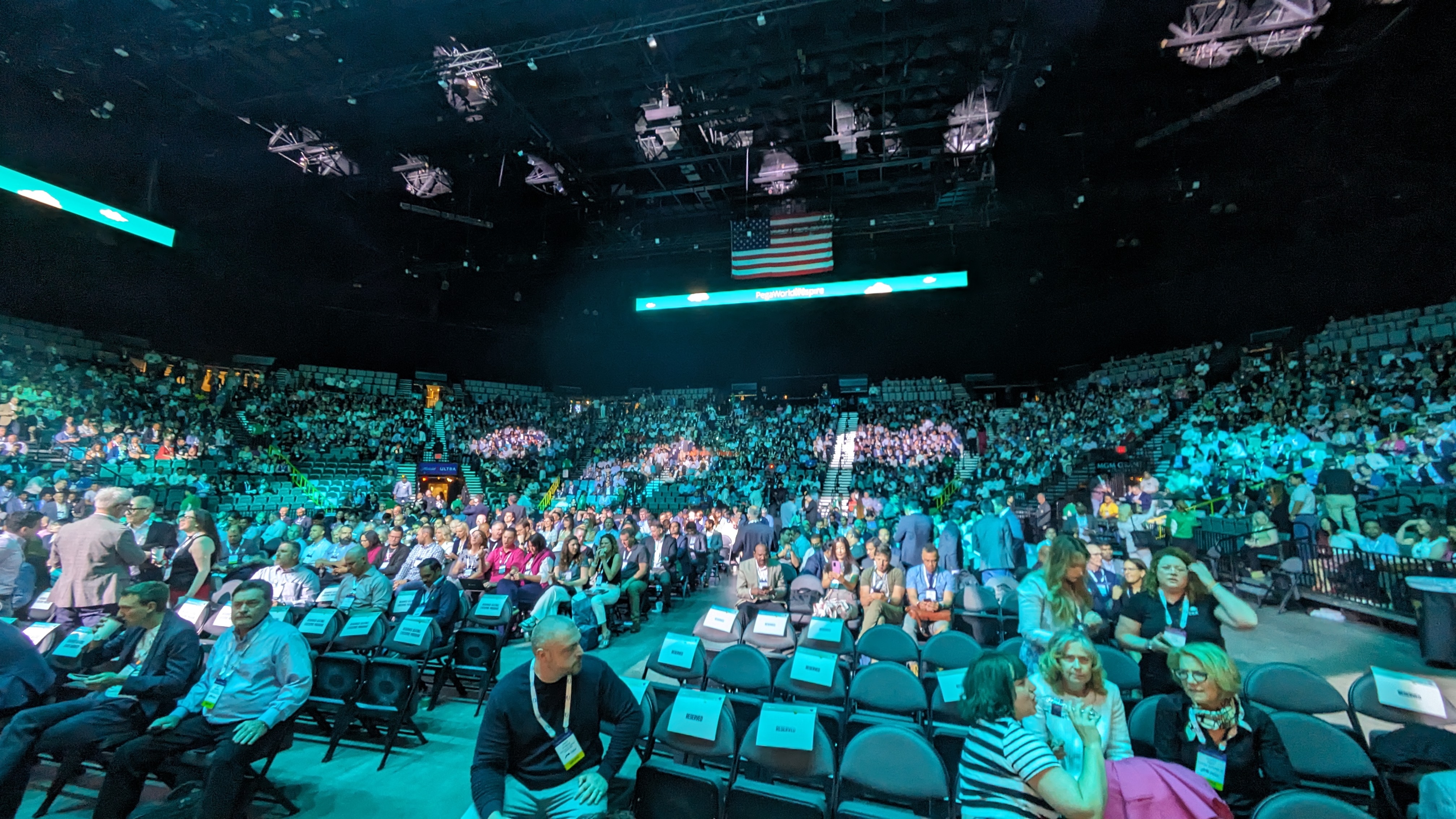
Here we go! The lights are dimming and hush has descended on the MGM Grand auditorium.
A Pega showreel is projected onto the screen explaining that technology has enabled businesses to break down barriers in productivity and automation.
With that Alan Trefler takes the stage to whistles and cheers from the audience. Trefler says he has never come to one of these events with a technical agenda as game-changing as he has to show us today, describing it as a revolutionary moment.
We'll see how much this agenda cuts through much of the AI hype cycle and drills down on the real value generative AI can bring businesses.
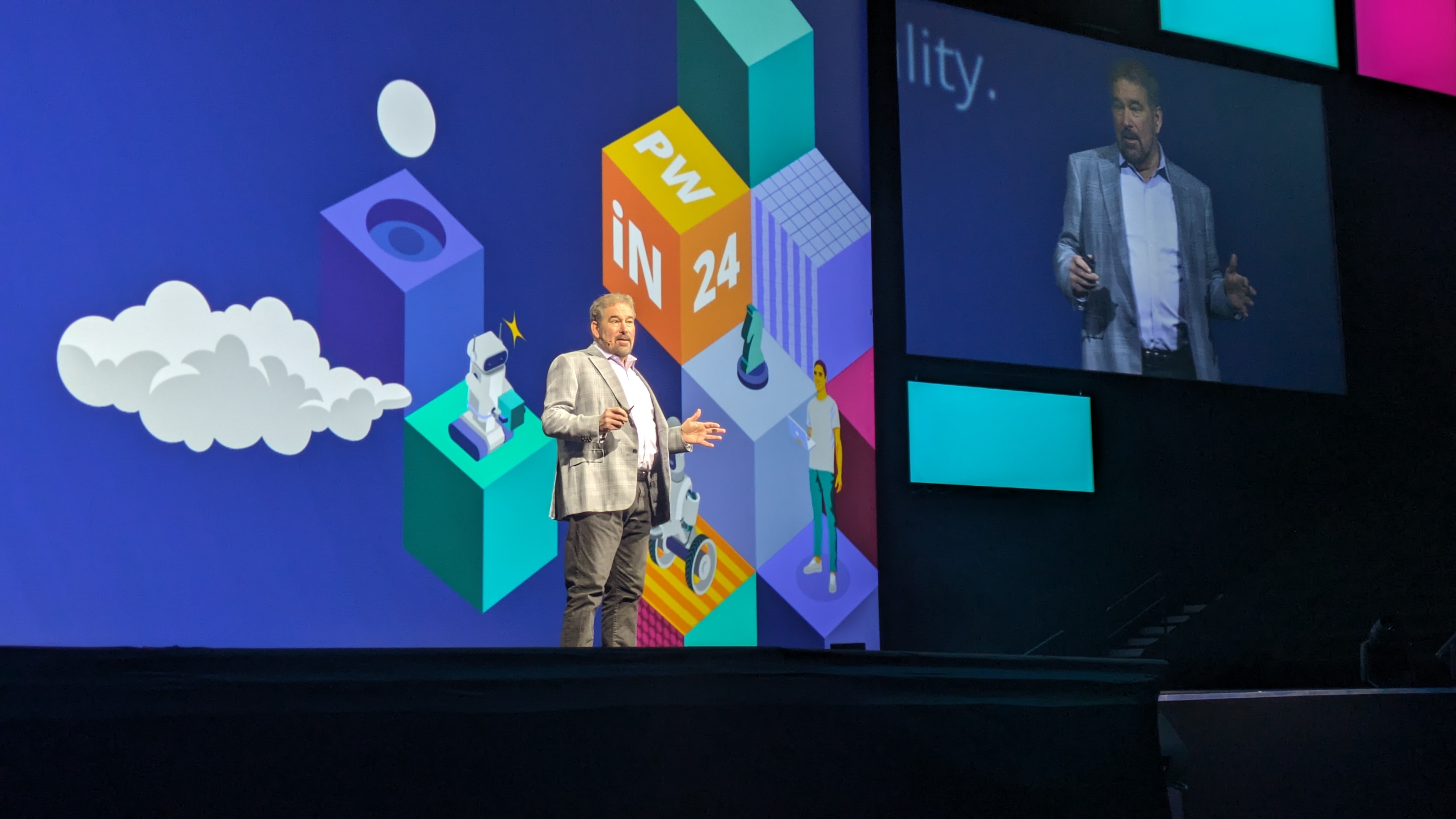
Trefler says he wants to talk about Pega’s center-out approach to business architecture. He notes that many clients he has worked with try to apply AI across their channels which inevitably puts business rules and processes in the channel, which ultimately dooms them in inefficiency.
He says the center-out approach is the cornerstone of Pega’s future strategy: working towards the autonomous enterprises of the future. By changing workflows in the center, these changes instantly flow across the web channel, frontends, and backend systems.
He says the center-out approach is the cornerstone of Pega’s future strategy: working towards the autonomous enterprises of the future. By changing workflows in the center, these changes instantly flow across the web channel, frontends, and backend systems.
Last year, Trefler set the goal of doubling developer productivity and says with Pega’s GenAI solutions he says this target was met. He also set the target of putting expertise at the fingertips of engineers, wherever they are in the businesses. Finally, the third target was figuring out how AI can be used to continuously optimize autonomous enterprises.
Last year, Trefler set the goal of doubling developer productivity and says with Pega’s GenAI solutions he says this target was met. He also set the target of putting expertise at the fingertips of engineers, wherever they are in the businesses. Finally, the third target was figuring out how AI can be used to continuously optimize autonomous enterprises.
Trefler says he is happy to report the landscape looks very promising. The first step towards this is Knowledge Buddy. Pega’s generative AI assistant that is trained using a RAG type skew of generative AI that can be customized according to a businesses needs and trained on their best practices and data lakes.
Another piece of the puzzle is a new generative AI tutor, dubbed Socrates. That will use a conversational two-way learning model to move past the limitations of previous passive-style learning methods. With Socrates, Pega employs techniques embedded in the Socratic method to help students discover learnings for themselves and embed this knowledge in a meaningful way.
Trelfer is frank about the AI hype cycle, acknowledging there is a bubble in the AI field. For example, he says generative AI code-generation is not the best use of the system. Instead he puts forward the three areas he sees as integral to getting the most out of AI systems.
The first is decisioning using predictive, statistical AI. Second is productivity tools enabled by generative AI, like summarization. The third aspect to AI, according to Trefler, is where Pega is leading the industry on transformation using generative AI. Helping businesses modernize, and embrace the digital transformation using Pega GenAI Blueprint, their SaaS engine that will help businesses design applications using simple prompts.
Blueprint allows users to take advantage of Pega’s best practices, honed over 40 years’ of operating in the decisioning and automation space, all built into the system using GenAI technology. Partners are also able to create their own templates on Blueprint, He says within the five weeks of offering this service to partners, there have been over 60 templates uploaded to the platform.
The innovation imperative driven by AI
Blueprint also uses generative AI to scan the web to glean best practices for case types that perhaps Pegasystems does not have expertise in.
All this comes together to form a radically new way to conceive of application designs, which can be amended in and collaborated on in real time. Trefler says what he thinks Blueprint has achieved is packaging the hard part of revolutionizing and transforming businesses and condensing this into a safe manageable interface.
What Pega is doing with Blueprint is letting businesses really think about revitalizing their legacy systems, and this ultimately is how the company sees it working with businesses to 'build for change', the company’s mantra.
As Trefler neatly ends on the companies tagline, he takes his leave and gives way to the cohosts who will be guiding us through the rest of the keynote presentations set for today.
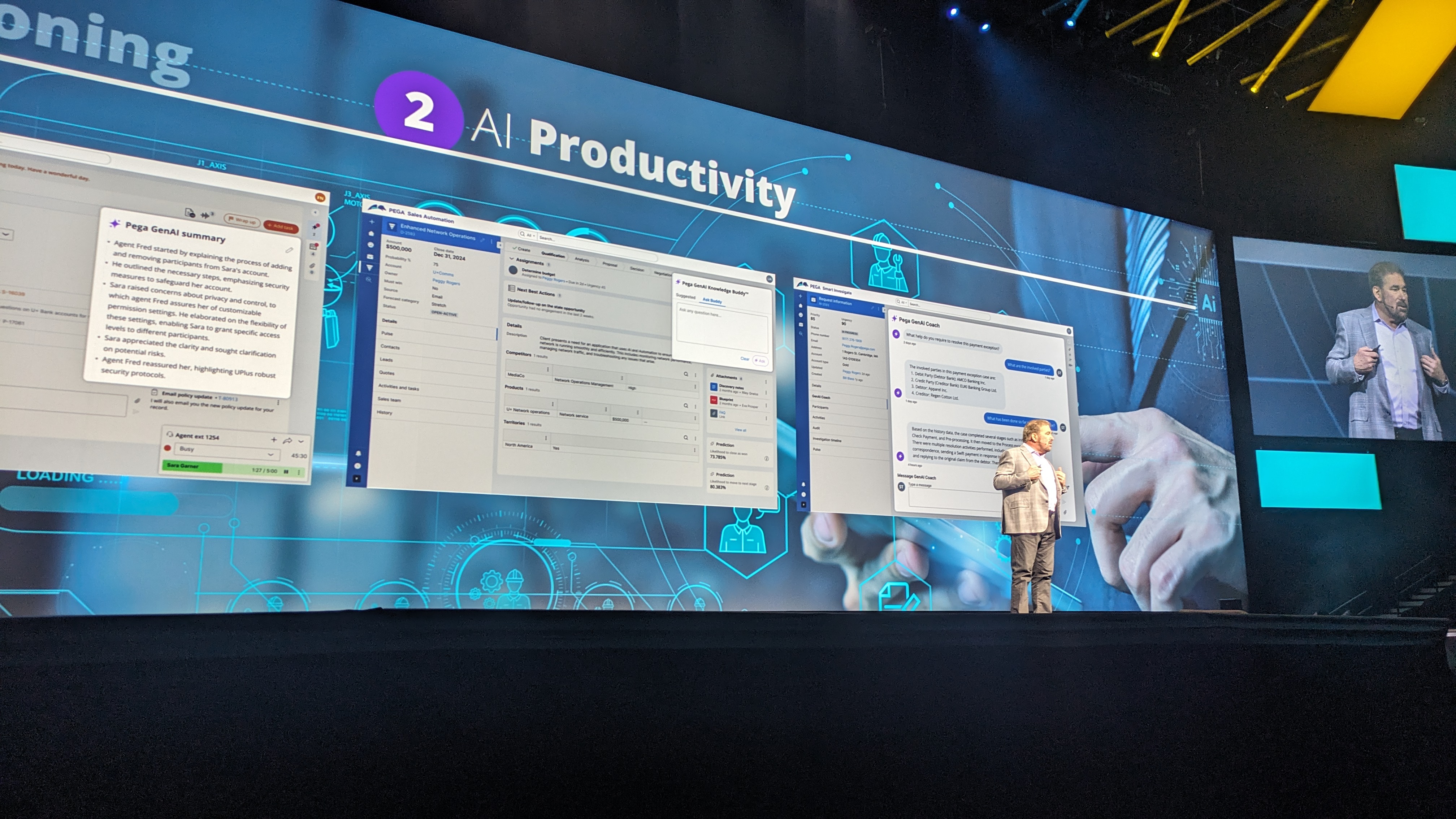
Now we have Matt Nolan, senior director of Product Marketing at Pega, and Steph Louis, head of Digital Client Success and Experience at Pegasystems. Who are welcoming the crowd to Las Vegas and giving some general housekeeping over the course of the event, and thanking the sponsors of PegaWorld iNspire.
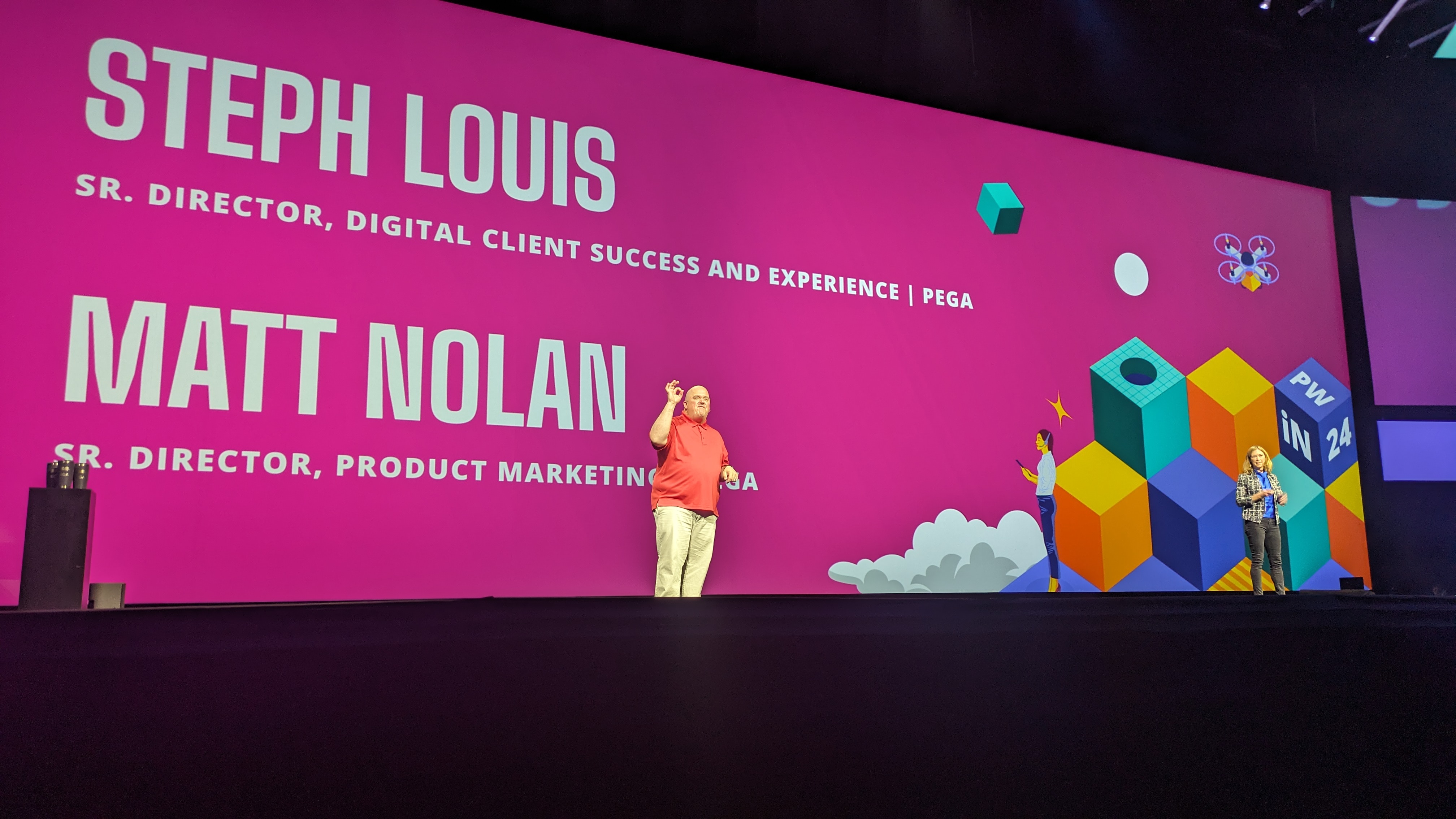
Nolan has made his way off stage and now Louis welcomes Katrina Fluss supervisory program and management analyst at the US Department of Veterans Affairs onto the stage.
Fluss takes her seat with Louis and explains what the Veteran Family program does for former service people from the US. Part of the Office for Integrated Veteran Care (IVC) Supports the Veteran Family Member Programs (VFMP), which provides the sole method for veterans, family members, and caregivers to apply for and receive benefits from healthcare programs.
Fluss explains her job is to manage data analytics, dashboards, project management, as well as outreach for the Department of Veteran's Affairs, which brings her here to Las Vegas today. Fluss gives the audience a brief outline of her career path and how she ended up at the program management office at the Department of Veteran's Affairs.
Fluss explains that her unique background in workflow management and her work in introducing modernized applications to the Veteran Family Member Porgrams has helped increase efficiency and improve the experience of those veterans and their families looked after under the program.
She explains the dire place the legacy eligibility system was in when she arrived. In 2022, the time required to determine eligibility for the VFMP was glacial, taking six months from physical mail submission to confirmation of eligibility.
Fluss discusses how she implemented Pegasystems' workflow optimization solutions across the organization to connect various document management systems. She says much of the process was still paper-based, and now she has streamlining this system does not mean removing this functionality, as many of their stakeholders are multi-generational and still engage with the organization through legacy methods, like fax for example.
Modernizing the VA Family Member Program
Fluss says their modernization efforts have reduced backlogs, the size of the packets that need to be processed, working towards a future where eligibility determinations are dramatically streamlined, helping disentangle the documentation sorting process and helping embed it into their digital workflow. She says a new totally online claims submission and records submission processes are coming later this year, while preserving the ability to use fax, physical mail, to submit documentation in a way they are familiar with.
That's it from Katrina, who is warmly cheered off stage and Nolan rejoins Louis for the next portion of today's keynote agenda. Up next will be Jeff Frantz, VP of Data and AI at T-Mobile.
Frantz is responsible for leading Ai and data initiatives both internally and externally across T-Mobile, he previously oversaw Verizon’s Location Technology, Robotics, and AI & ML arm and wants to go on a deep dive into T-Mobile's comittment to customer centricity.
This refers to the business operating telos that prioritizing customer experience in all aspects of a company's decisioning.
Frantz begins with where T-Mobile were in 2012, stating the company was America’s fastest declining wireless company, saying they were losing 2 million customers a year, roughly 10% of their base.
But Frantz says the company had a goal of becoming a world-class brand with a reputation like Nike or Apple. Not easy for operating in an industry that was not known for being customer-centric. To do this he says the company had to find new ways of engaging the customer, showing the user love - a concept not often discussed in the corporate world but one Frantz says T-Mobile live by.
Pegasystems was part of T-Mobile’s journey toward putting the customer at the center of their workflow, Frantz explains. He says this is behind the company tagline, ‘the un-carrier’, which embeds putting the customer at the heart of everything the business does.
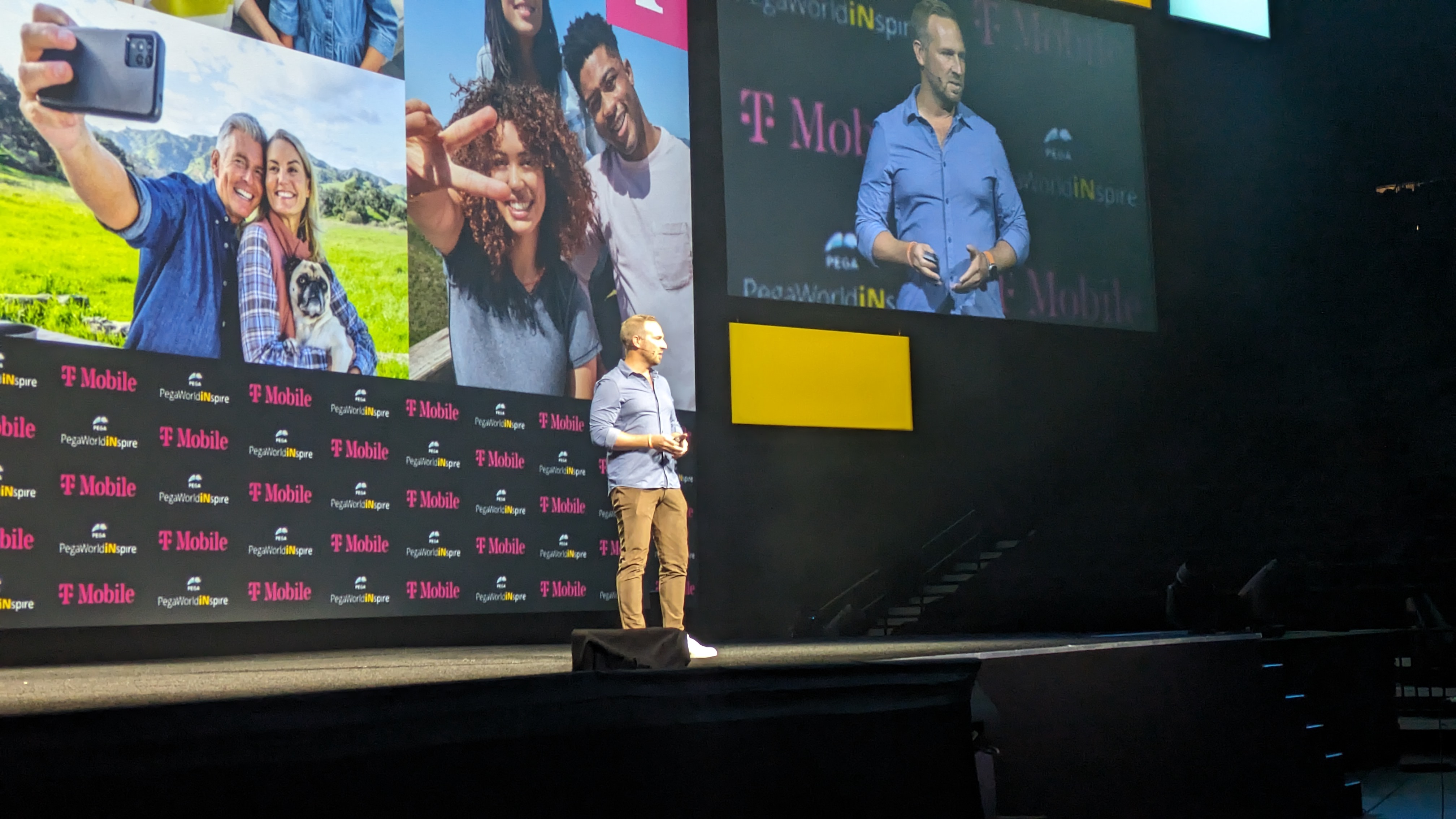
Frantz says he is pleased to say they have made significant progress towards this goal, as of Q1 it had 121 million customers across the US, stating it is working pretty well. A core part of the strategy was identifying the common pain points for customers, and drilling down on this to achieve world-class customer care.
This meant anticipating the customer’s needs better and faster, and doing this at scale, which Pegasystems' solutions were vital for, Frantz notes, leveraging T-Mobile’s expansive data lakes to provide tailored solutions across their stack. From 2013-2024 T-Mobile is the world’s most valuable telco, and America’s fastest growing wireless company. But Frantz says there is still a lot of work to be done.
Now Frantz moves on to where the company is going, and hits back on his favorite phrase ‘customer love’, continuing to personalize customer experiences at scale, across every channel. Part of this is anticipating the customer’s needs and reaching out to them before they encounter an issue, “the best customer care call is one that never happens”. Instead T-Mobile wants to be proactive, acknowledging the customer may have experienced an issue and explaining why this was the case and what they are doing to fix this.
Integral to this is the Pega Customer Decision Hub, which allows for personalization at scale. This helps customer care staff give better, more informed support to customers. The system understands the customer profile, the context of the call, the propensity of how the customer responds to things in the past. Armed with all this data the hub can offer the customer treatments and context around those treatments.
T-Mobile's journey to customer centricity
Frantz says he wants to deploy intelligent solutions like Pega Customer Decision Hub in company APIs across the board. Better personalization for customers is how T-Mobile are moving towards this goal of showing the customer this love Frantz is referring to.
Integrating this into the tools of frontline employees so they have the access to that data and those decisions when they need to take actions is vital, Frantz adds.
Frantz says the results of this are positive, based on the growth he referred to earlier, but notes T-Mobile is aware it can improve, and the core of this is making the user experience even more personalized, more engaging, and more relevant.
The mantra of showing the customer love and extending it to prospects who are currently under the umbrella of competitors is another area the company is targeting, Frantz states.
Now Frantz is walking through some of the key business metrics integral to understanding how your business is doing on this journey of boosting customer centricity. These are improved first call resolution, increased net promoter scores, reduced customer churn, and improved agent performance.
Frantz wraps up, with three key lessons he wants the audience to take from what T-Mobile have understood on their journey towards customer centricity. Predictably one of these is showing the customer love, next is to learn, and never stop doing so as an organization and as people, stating this is how you grow. Finally, Frantz lands on the point of change, understanding what’s working and what is not, and making this process data-driven.
And that’s it from Frantz, who gives way to our co hosts Nolan and Louis.
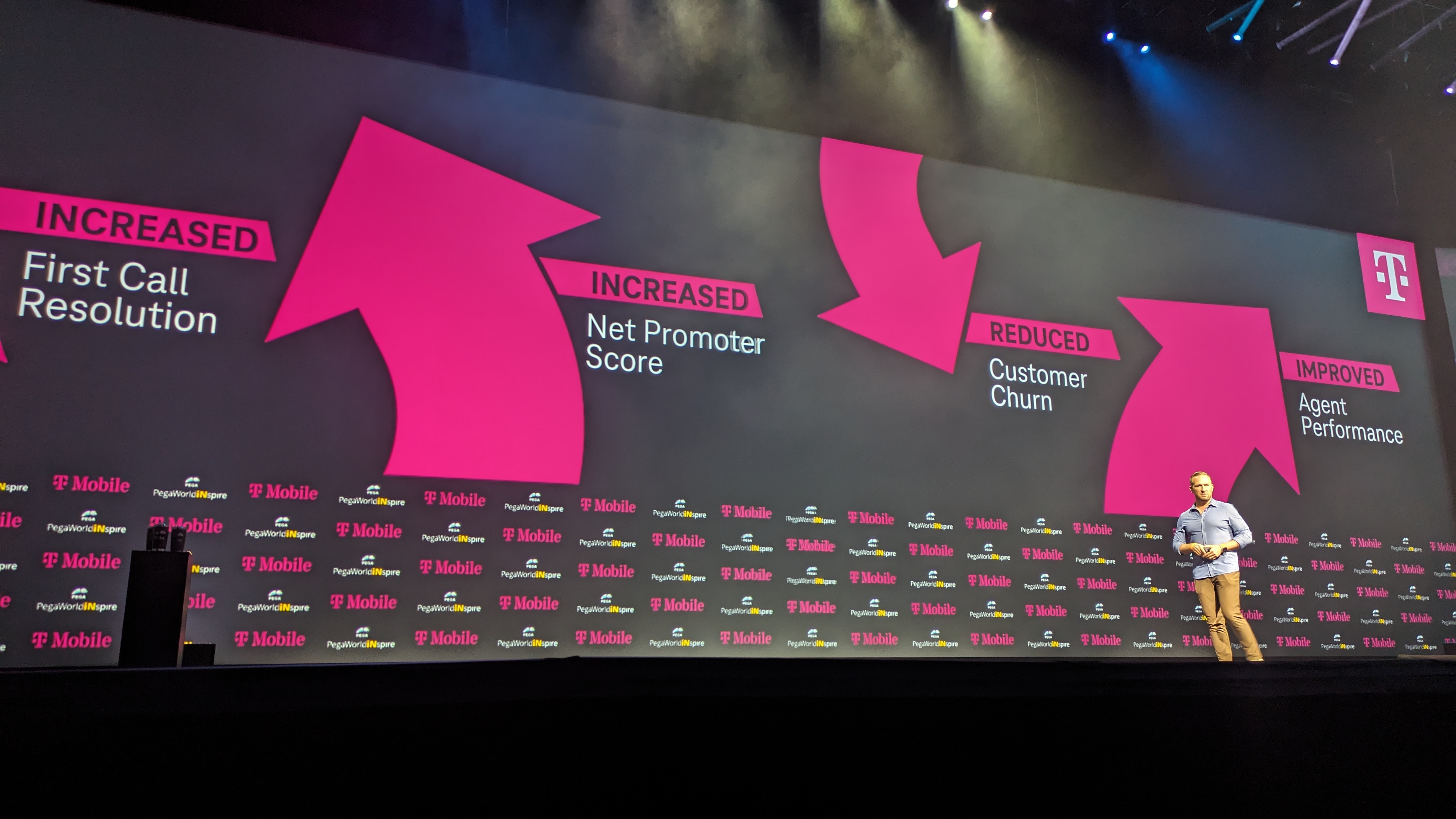
Akgonul takes the stage and refers to the iconic Steve Balmer developer conference where he asked “what is the key to digital transformation? Developers. Developers. Developers.”
Now Akgnonul wants to make a similar statement. Only this time he thinks the answer is ‘genAI. genAI genAI’. Akgonul announces that their flagship genAI microservice Pega Infinity has expanded to allow for enterprise generative AI choice with further support for Google Cloud, AWS, and Anthropic. Previously Pega’s GenAI framework was solely based on Microsoft Azure OpenAI, and now customers have the choice of their hyperscalers.
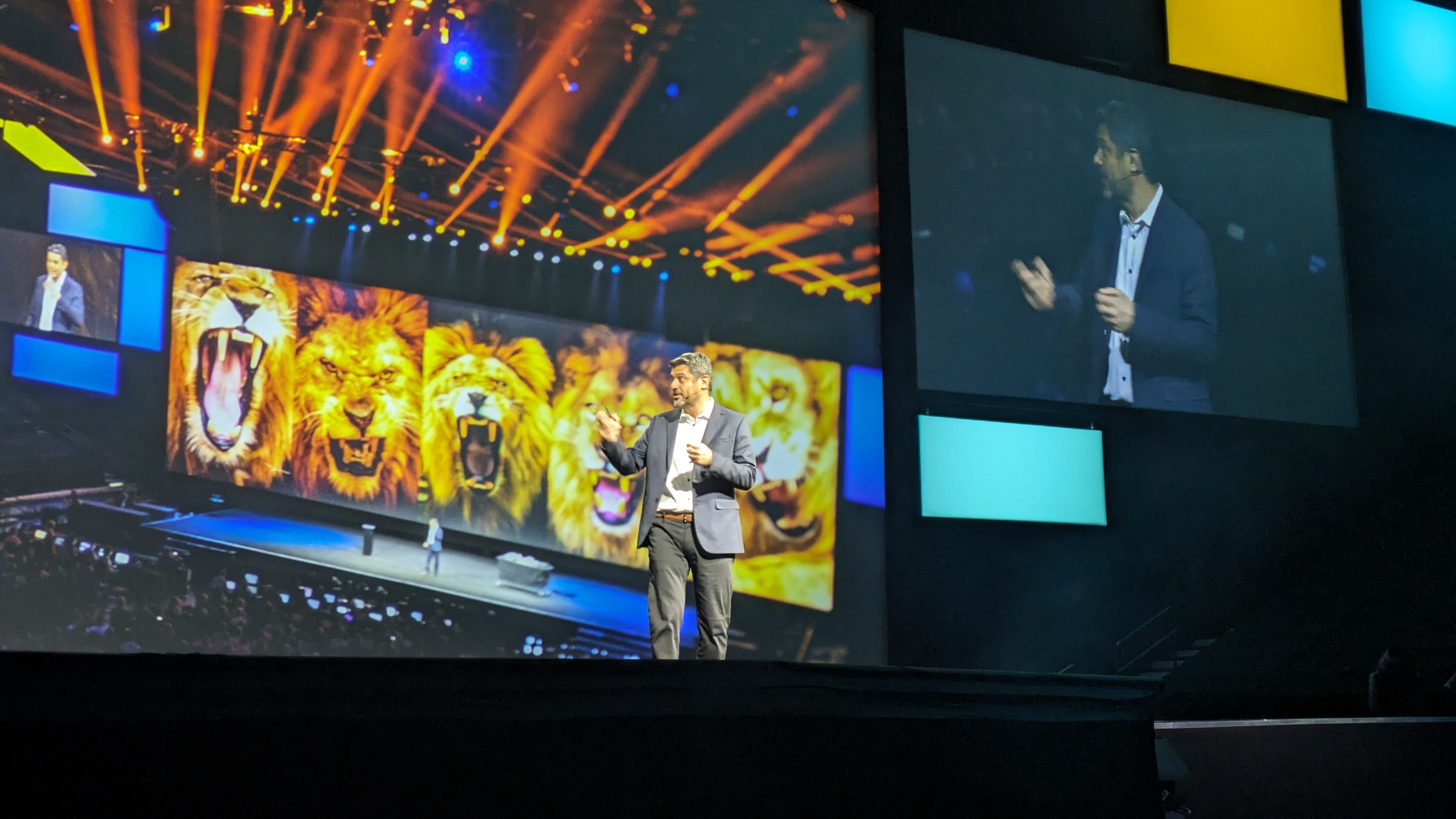
Akgonul is now talking about Pega’s GenAI Knowledge Buddy, touched on in Trefler’s opening address, going into more depth on how the solution works. Akgonul will do this in the context of a contact center.
Akgonul gives the example of Tony, an agent at an insurance contact center, which uses Pega customer service on Pega Cloud. Tony gets a question he has never heard before, previously he would have to get up and ask around, call a supervisor, or consult legacy documentation.
Instead, with Knowledge Buddy, Tony can enter into a conversation with the agent, trained on the businesses repository without having to waste any time looking through long and complex business best practices.
In another example, Akgnonul discusses the Pega GenAI Agent Trainer. He introduces Heather, a brand new agent who needs to be skilled up. The system is able to generate fake customer personas to get Heather up to speed. Covering a broad array of the types of callers she might encounter.
These virtual customers call in with requests just as a real customer would, and after Heather finishes supporting them, the GenAI Agent trainer will give her tips on how to improve.
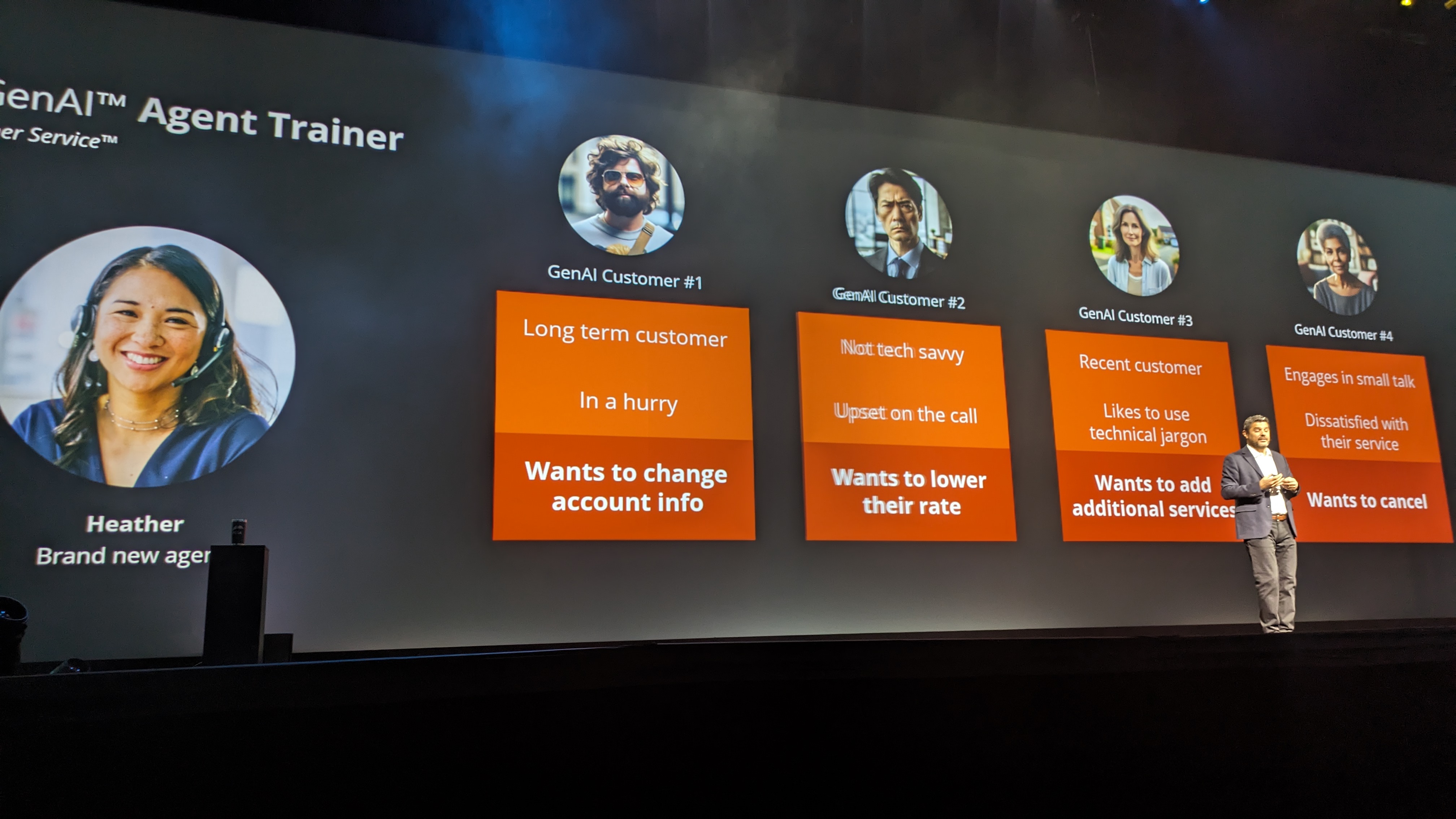
Next up is Pegasystems' Customer Decision Hub (CDH), which Frantz discussed earlier, and combines statistical and generative AI to create treatments that are optimized for specific customer segments.
Combining these two forms of artificial intelligence, is what Akgonul thinks is helping Pegasystems differentiate itself from competitors in CRM and BPM businesses in the market.
Akgonul says many businesses have approached GenAI in a manner that he believes limits the true value it can offer, giving the example of a flood of generative AI code generation capabilities, that simply litter errors in code and don’t really materially improve developer productivity.
Akgonul moves on to Pega GenAI Blueprint, a solution that has garnered much excitement leading up to this event. Announced in Beta in February, Blueprint is a collaboration tool that promises to help accelerate app design and build new apps when paired with Pegasystems' automation and low-code development platform.
Designing and then developing apps can take weeks, Blueprint differs from GenAI solutions within the app development cycle is that it assists during the ideation phase of design thinking rather than just in the creation of code. Now Akgonul wants to tease some of the new capabilities coming to Blueprint.
Firstly, he says Pegasystems have completely changed the design of the Blueprint user experience to make it even easier to use. The next generation of Blueprint will offer users a full preview of what the workflow will look like for an application when applied to every single channel across the organization, and this functionality can be generated in just 30 seconds, Akgonul boasts.
He says this new generation of GenA not only figures out the workflows and data model, but also uses GenAI to figure out the user experience that will define the application once it is built.
Another feature coming to Blueprint, is the ability to import swagger definitions of existing applications to implement real connectivity, directly within the Blueprint interface.
Blueprint and Knowledge Buddy - the age of transformation is here
But what about areas that perhaps Pegasystems has not gained a lot of experience in during its years of helping organizations build their workflows? Akgonul says Blueprint also uses GenAi to scan the internet to glean best practices in more niche areas, using the example of a mud management application for an oil drilling company.
Also, Blueprint will be able to generate these applications in 10 languages to start with, including English, French, Spanish, Italian, Portuguese, German, Dutch, Swedish, Polish, and Japanese all natively available through the interface.
This is a refreshing addition that the rest of the market could do with taking note of, integral to democratizing access to tools like Blueprint, and draws a big cheer from the crowd.
The tool will generate a downloadable blueprint which users can feed into Pega’s automation and low code development platform to generate real, working applications in minutes.
“You are two clicks and two minutes from having your blueprint vision become a real enterprise grade on Pega Infinity.”
And with that, Akgonul concludes the first day's keynote!
The crowds quickly drain out of the auditorium and that is that for the opening day's keynote at PegaWorld Inspire.
To sum up the central theme of today's presentations: Pegasystems is looking to demonstrate how it's use of generative AI, in combination with statistical AI, can provide real value to organizations and radically transform how businesses interact with customers, redesign their core processes, and upskill staff.
Make sure to stay tuned for tomorrow's coverage of the day-two keynote, with updates from the ground throughout the event.
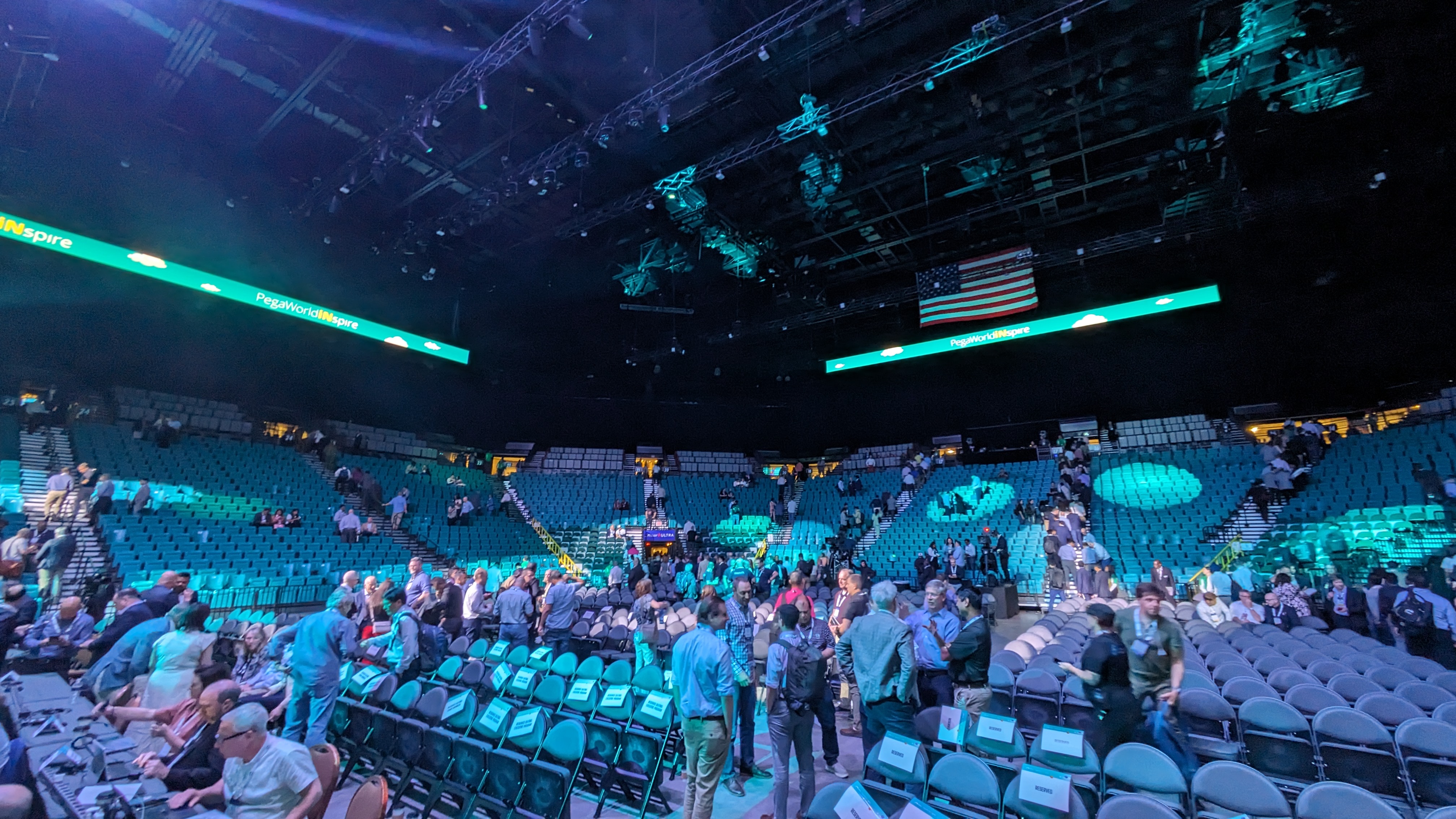
It’s still very early here at the MGM Grand and we have a few hours before things get underway. While we wait, why not take a look at some of ITPro’s coverage from yesterday’s announcements?
• Pegasystems goes all the way back to Socrates to transform corporate learning
We have just under half an hour before we are set to get started on the final day here at PegaWorld Inspire, but it's still relatively quiet outside the keynote theater.
That’s probably because the majority of the delegates are still outside enjoying the poolside breakfast before the Vegas sun gets too unbearable.
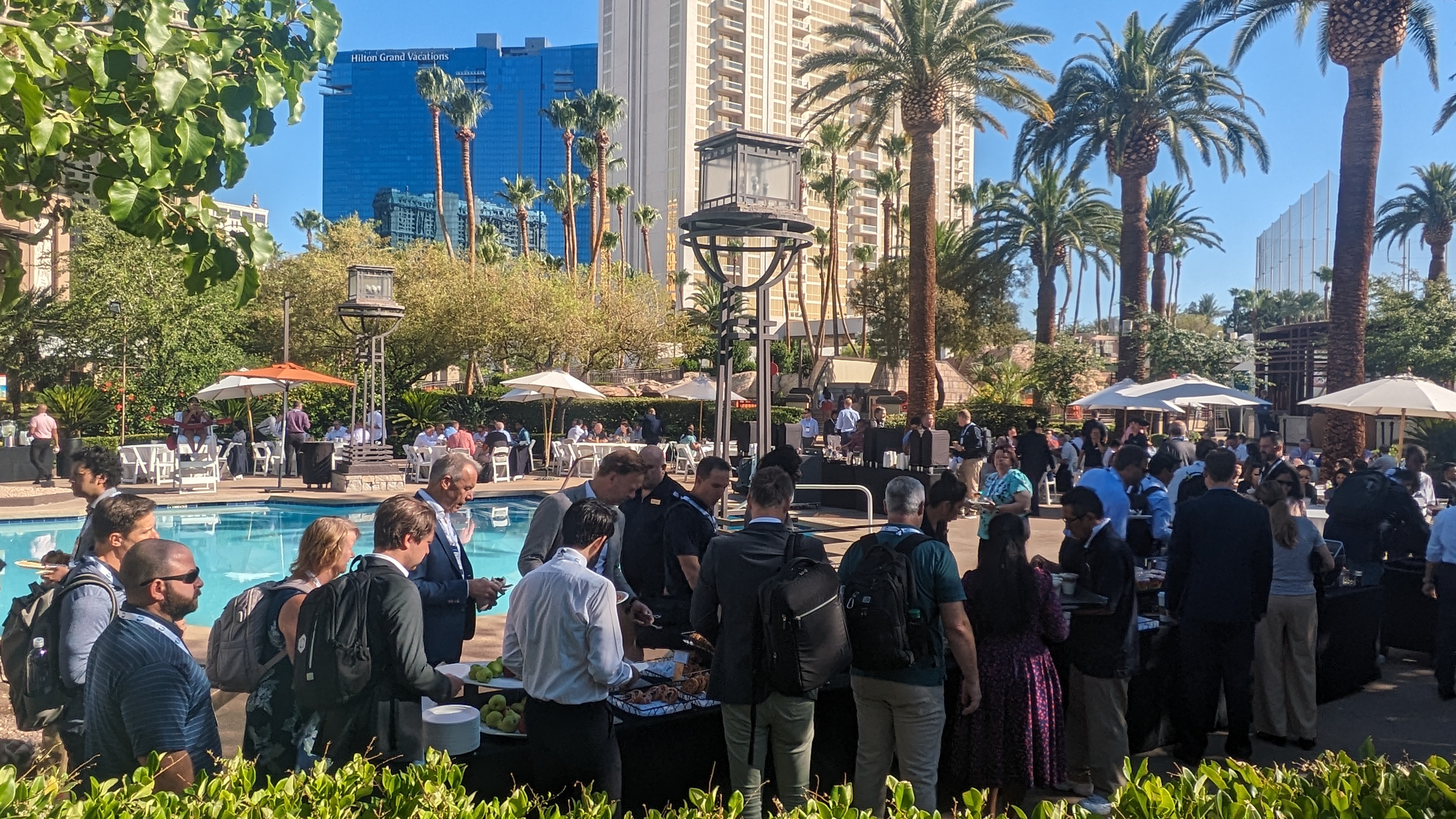
We are inside the keynote theater and things are starting to get a bit busier, a slow trickle of attendees has begun to file into the bleachers.
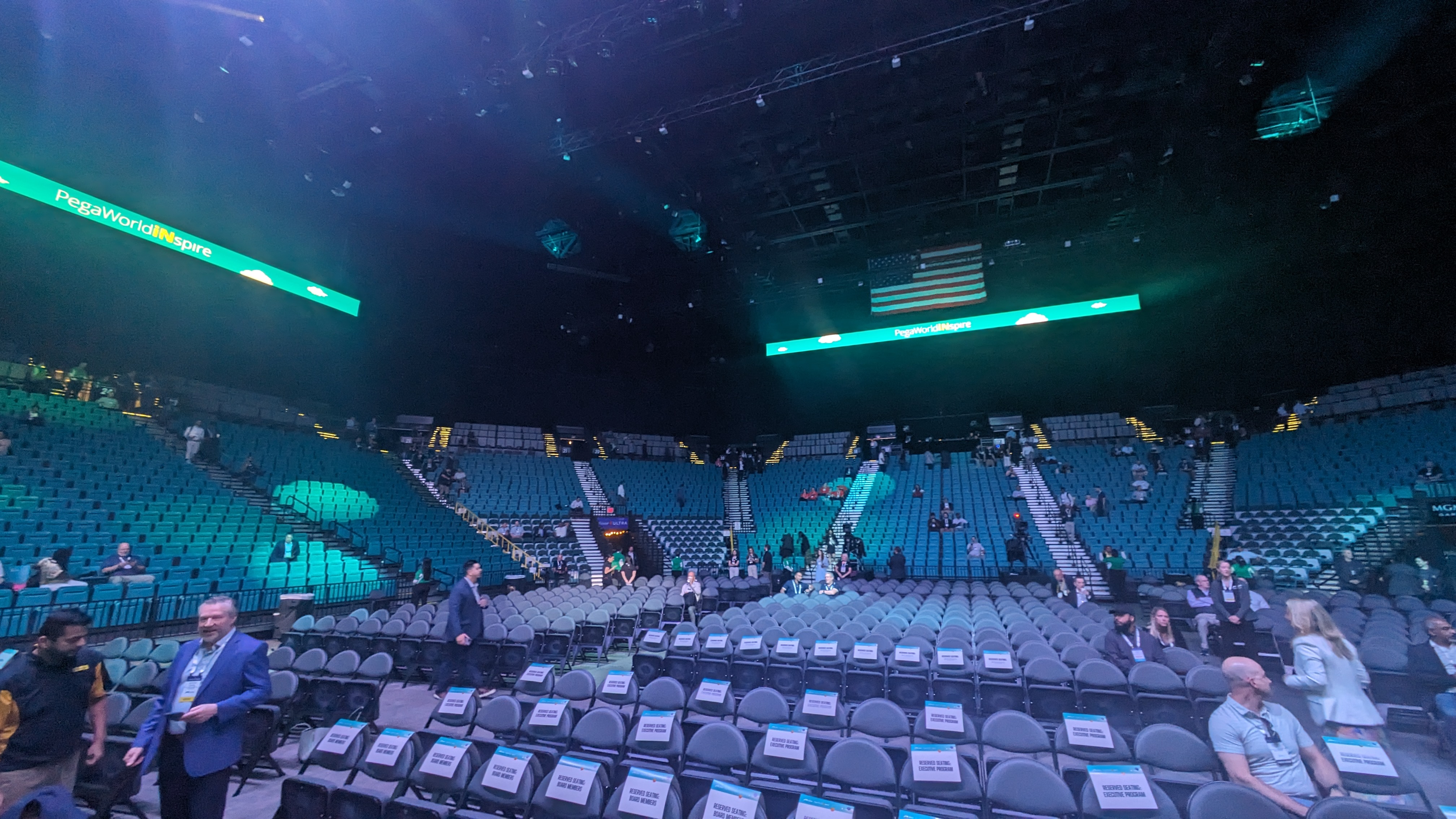
Yesterday we heard a lot about how Pegasystems are trying to separate themselves from the crowd with an approach to generative AI that goes beyond driving productivity gains, but actually creating a meaningful change in business processes themselves.
Today we can expect to hear about what this looks like in practice with testimony from Deutsche Bank and the National Australia Bank.
We will also be hearing from health insurance provider Elevance, an early adopter of Pegasystems’ solutions during Don Schuerman’s presentation, discussing their transformation towards becoming an autonomous enterprise.
I’m hoping Schuerman will flesh out this concept of the autonomous enterprise a little more, as it was only briefly touched on by CEO Alan Trefler, yesterday, and appears to be a core part of Pegasystems’ strategy moving forward.
The theater is filling up at a pace now, and the DJ, seemingly an obligatory inclusion at every keynote, is blasting Rihanna over the PA.
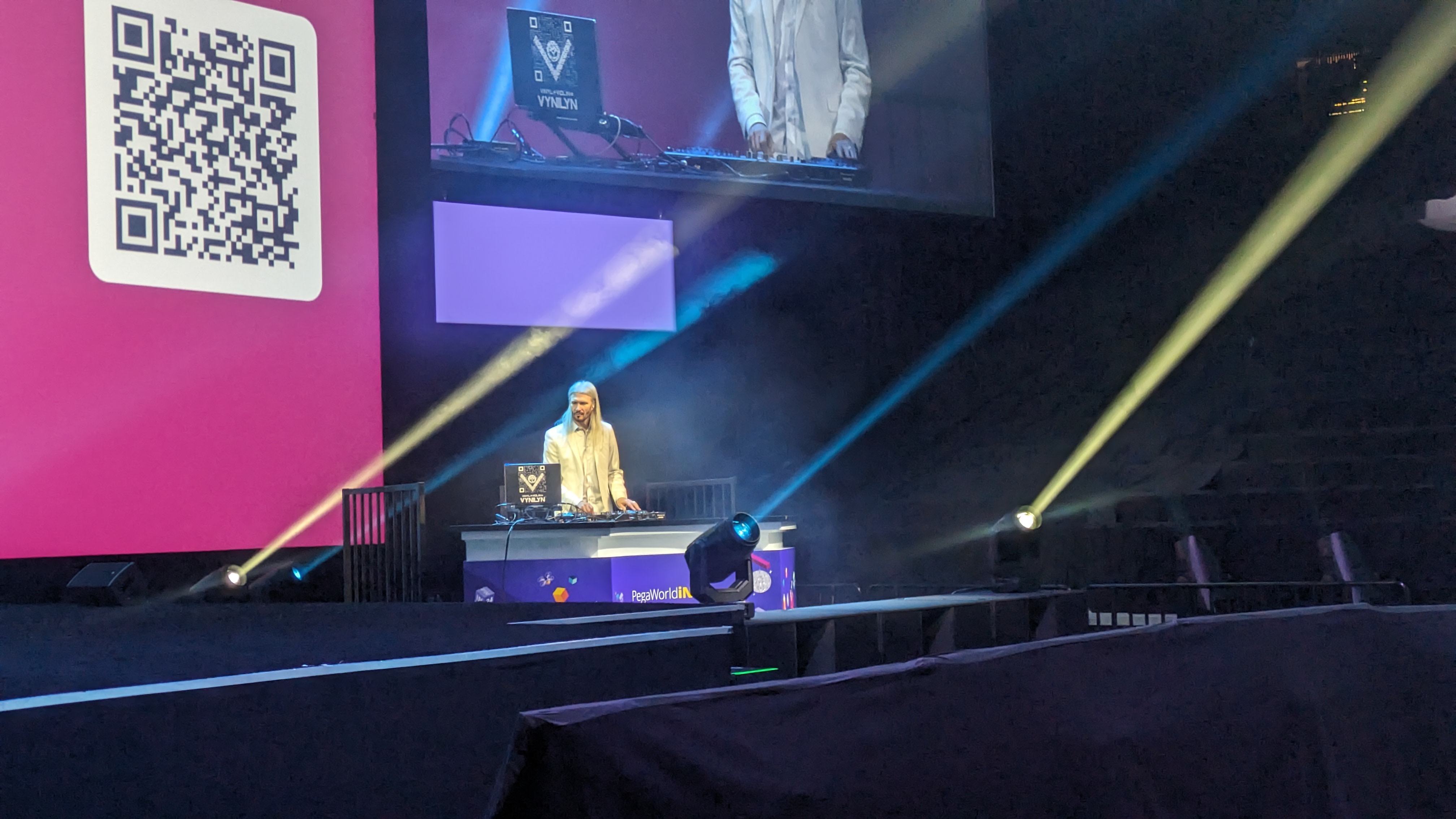
The PA has announced the show is going to get underway in five minutes and we are almost at capacity inside the MGM Grand Garden Arena.
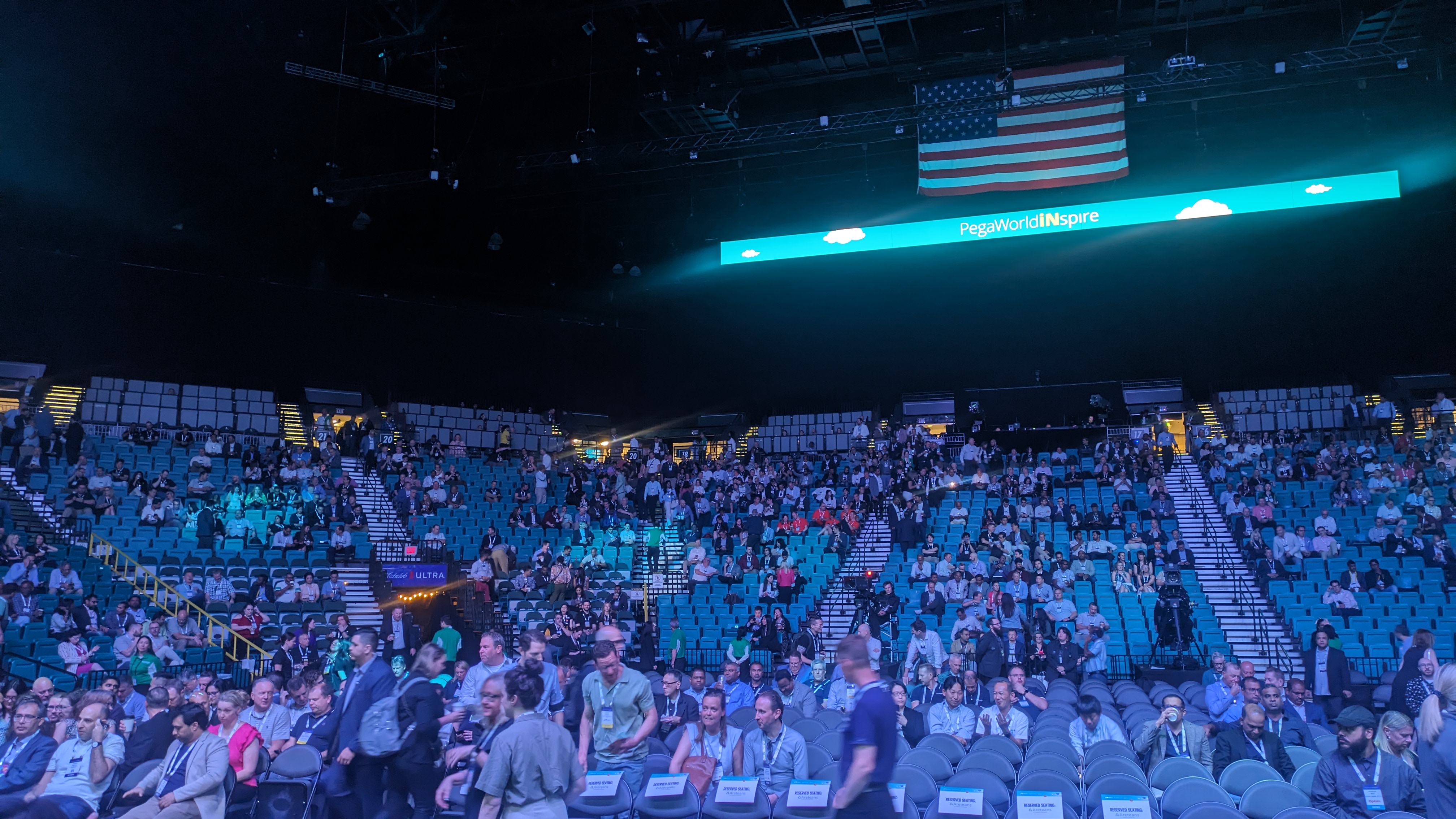
A violinist has entered the stage and is now accompanying the a heavily remixed version of Bring Me To Life by Evanescence, which very quickly transitions into Avicii - quite the spectacle.
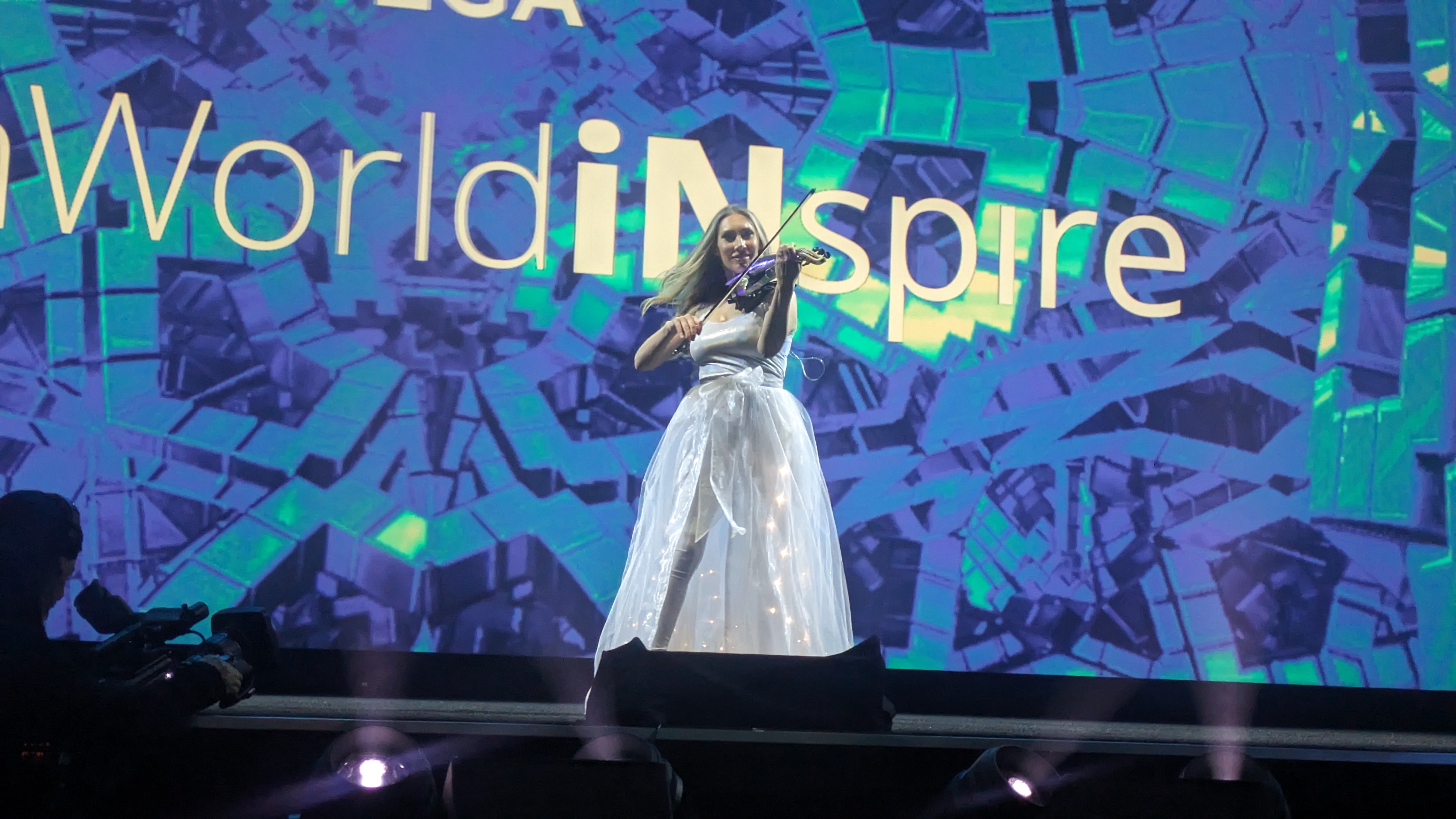
The violinist has wrapped up and exits the stage to a rapturous applause and it looks like things are about to get started as the lights dim for the final time at PegaWorld Inspire 2024 in Las Vegas.
Our cohosts Matt Nolan, senior director of Product Marketing and Steph Louis, head of Digital Client Success and Experience at Pegasystems take the stage to greet the audience.
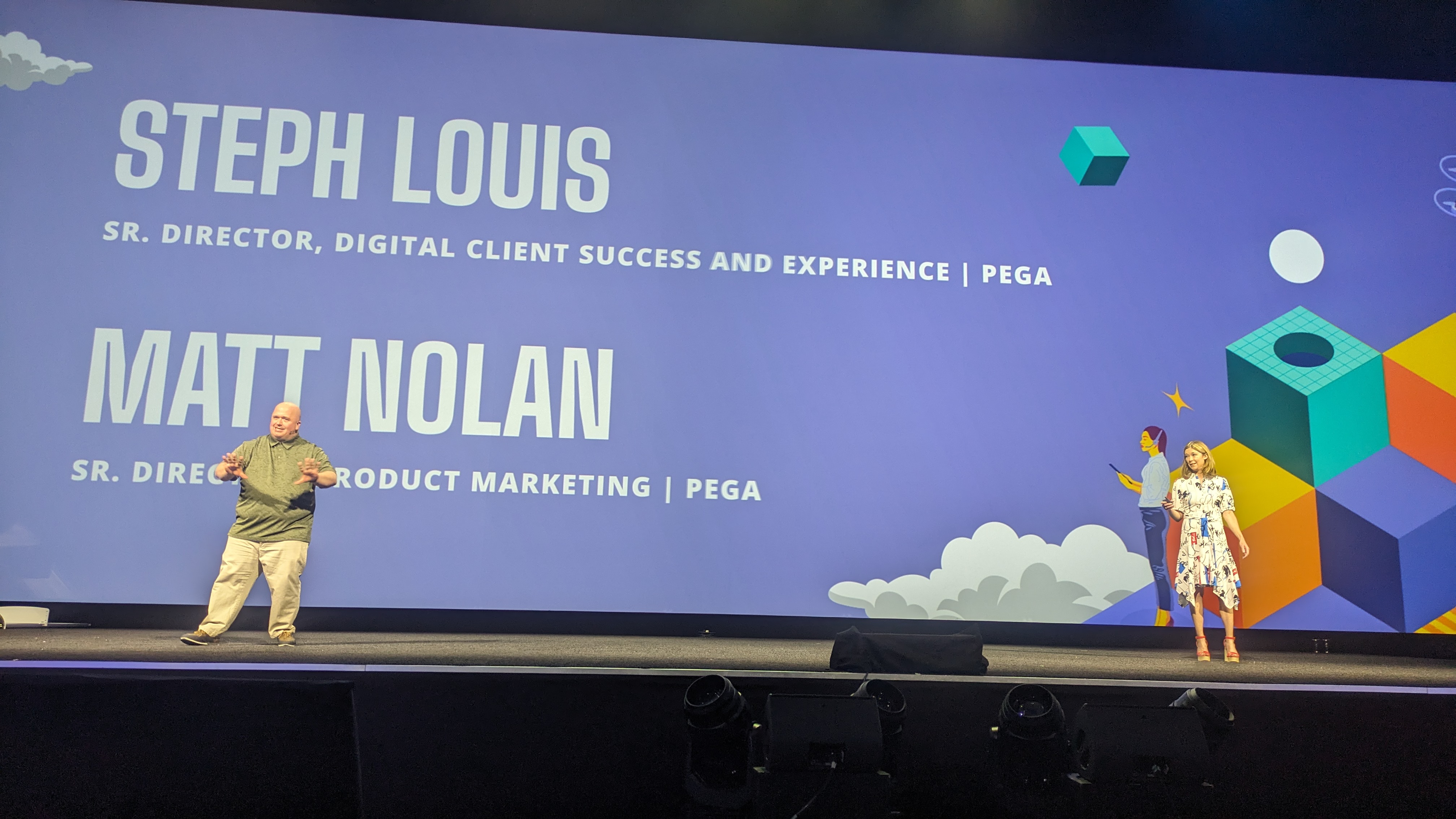
Transformation through Blueprint
Nolan gives way to welcome our first speaker to the stage, Daniel Wenzel, SVP of Design Authorities at Deutsche Telekom. Wenzel will be talking about how the company is transforming 800 HR processes with Pegasystems.
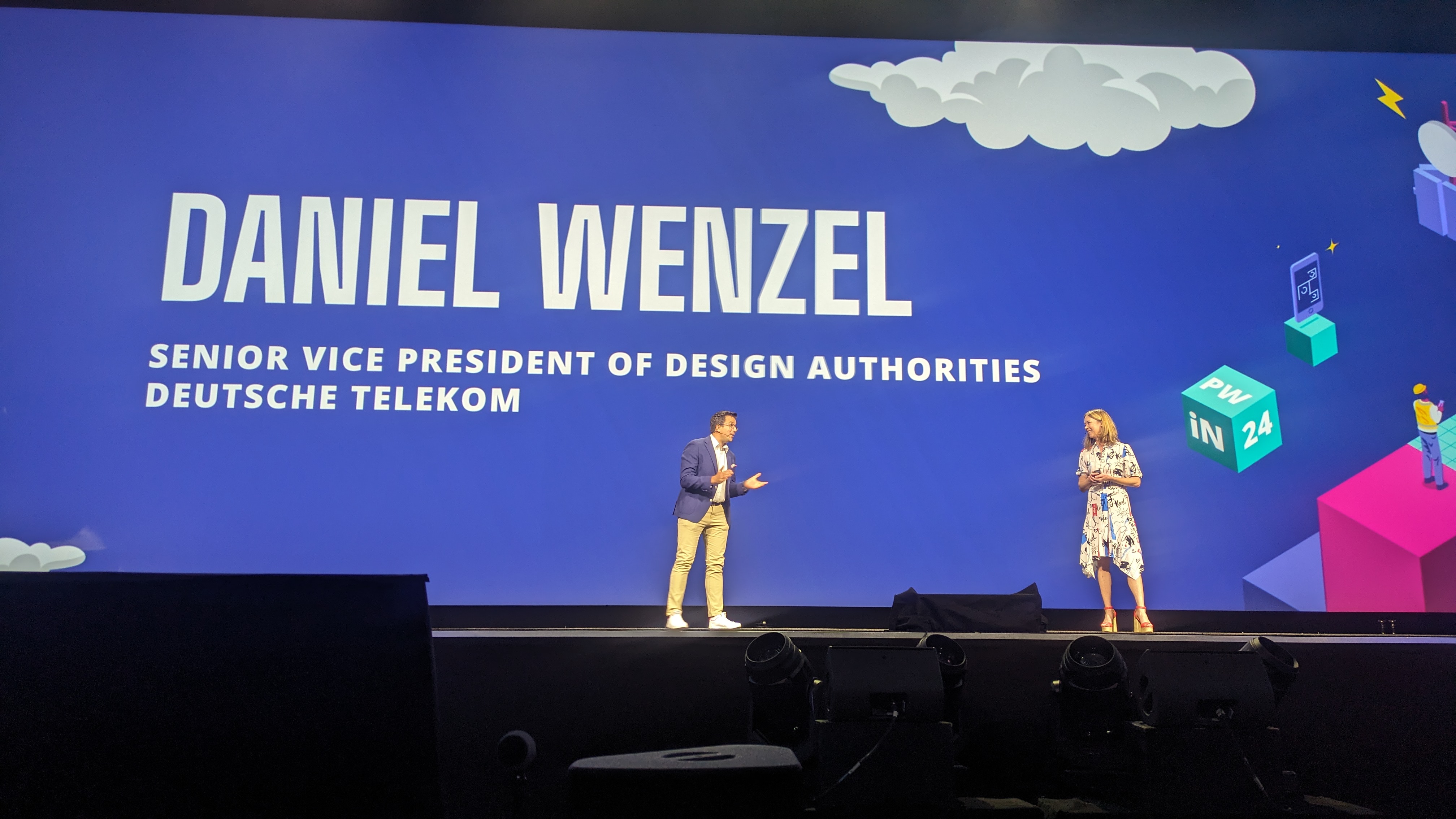
Wenzel says a problem his organization faces as a global telecom provider is the differences in the regulatory landscape between the various countries. He says that Pegasystems’ center-out approach allows the orchestration of different systems that interact and bring an improved digital experience for their customers.
Wenzel says to transform and modernize these 800 HR services they used Pega GenAI Blueprint as a brilliant way to get the discussion going, or as starting point from which they can begin to reimagine these processes.
Blueprint provides some quick wins today, Wenzel says, firstly to speak a common language. It is difficult for businesses to formulate their experience in their own terms in a way IT teams can realize.
Blueprint provides this common language, and allows businesses to use language they are comfortable with, which can be easily translated into previewable applications.
When moving from a legacy system to a new digital platform, you need to empty the platform by stopping or migrating the processes. Wenzel says Blueprint allows organizations to empty these systems and pull the plug on legacy systems and migrate the stuff you need, which he says is where the real value comes in.
This is a common problem businesses face around not modernizing but overhauling legacy applications, and Blueprint's collaborative approach that allows users to quickly envision what a new process could look like has been an important value driver for Wenzel.
Wenzel says he thinks Pegasystems have delivered on their promise to deliver a 50% boost to developer productivity and tacks on another point he wants to make around Blueprint.
Blueprint is currently designed to work around design time, and says it would be very interesting to see what Blueprint can do when organizations use it on run time, to help them continuously optimize their processes.
That’s it from Wenzel and Nolan is back on stage with Louis and they are now demoing Pegasystems’ new dynamic generative AI tutor Socrates.
Socrates wants to reimagine corporate learning by providing a two-way interactive learning experience that adapts to the user according to their learning needs.
Inspired by the Greek philosopher, Nolan explains that Pegasystem’s wanted to incorporate the rationale embedded in the Socratic method, that students who are led to discover answers for themselves and engage their critical faculties, are more likely to retain that knowledge more effectively.
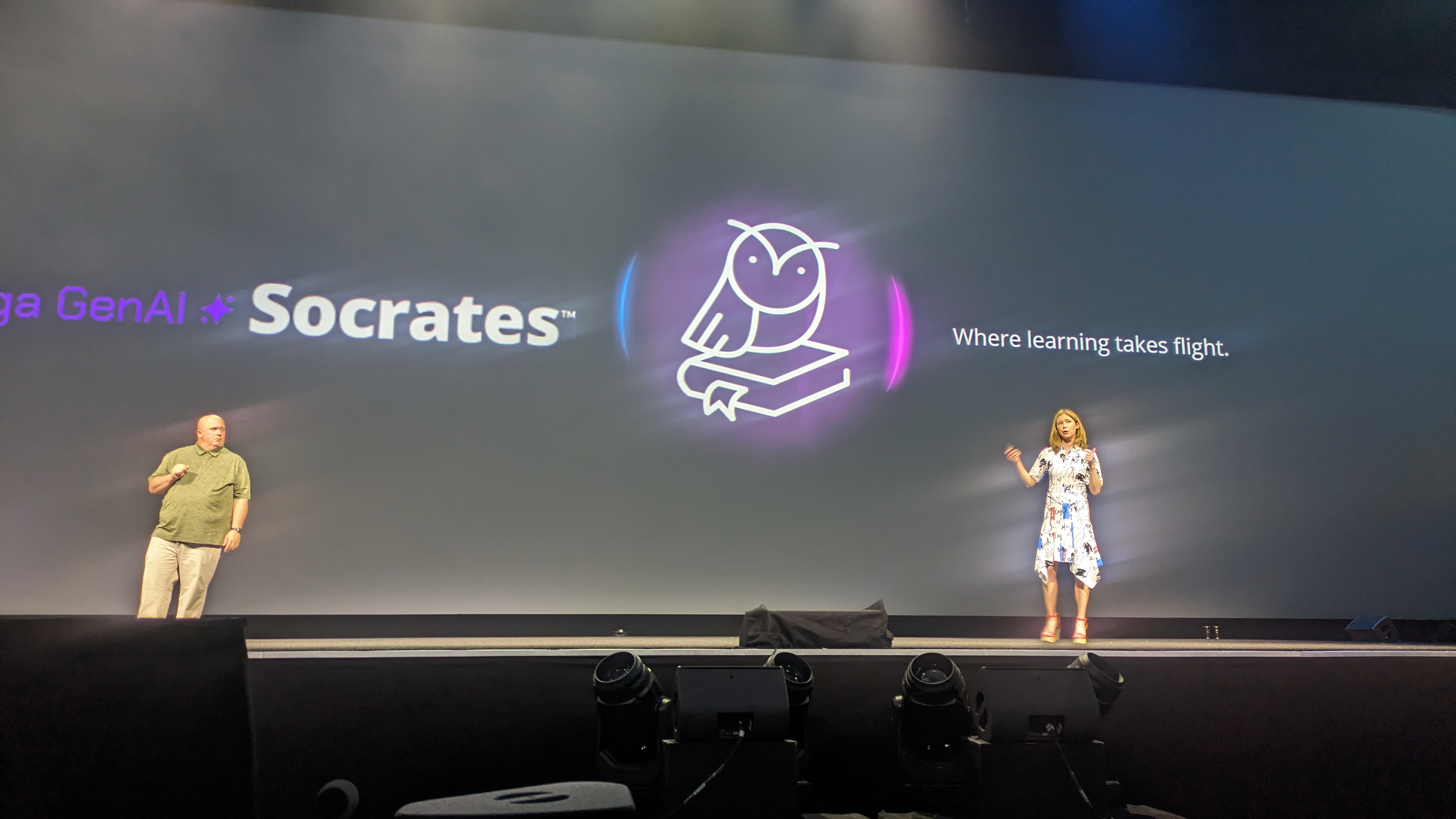
Building the customer brain
We are now moving onto our next speaker Jess Cuthbertson, executive, Customer Analytics & Decisioning at National Australia Bank (NAB), But before Cuthbertson joins us we have a video with testimony from her colleagues on how Pegasystems solutions has helped create more quality customer engagements and far better conversion rates, all using their internal customer ‘brain’ - powered by Pega.
Happy customers, feel like the business knows them personally, and the customer brain at the NAB can help provide these personal experiences at scale, meeting the customer where they are at, a NAB executive explains on screen.
Cuthbertson has joined Nolan and they have both taken a seat on stage. She begins by giving a quick intro on her background, she says she likes to think that she worked in data before it was cool. Nolan quickly retorts that the data was always cool, prompting chuckles from the crowd.
Now onto the meat of the discussion, the NAB’s customer brain, using everything you know about your customers to deliver timely, helpful, and personalized communications across all channels.
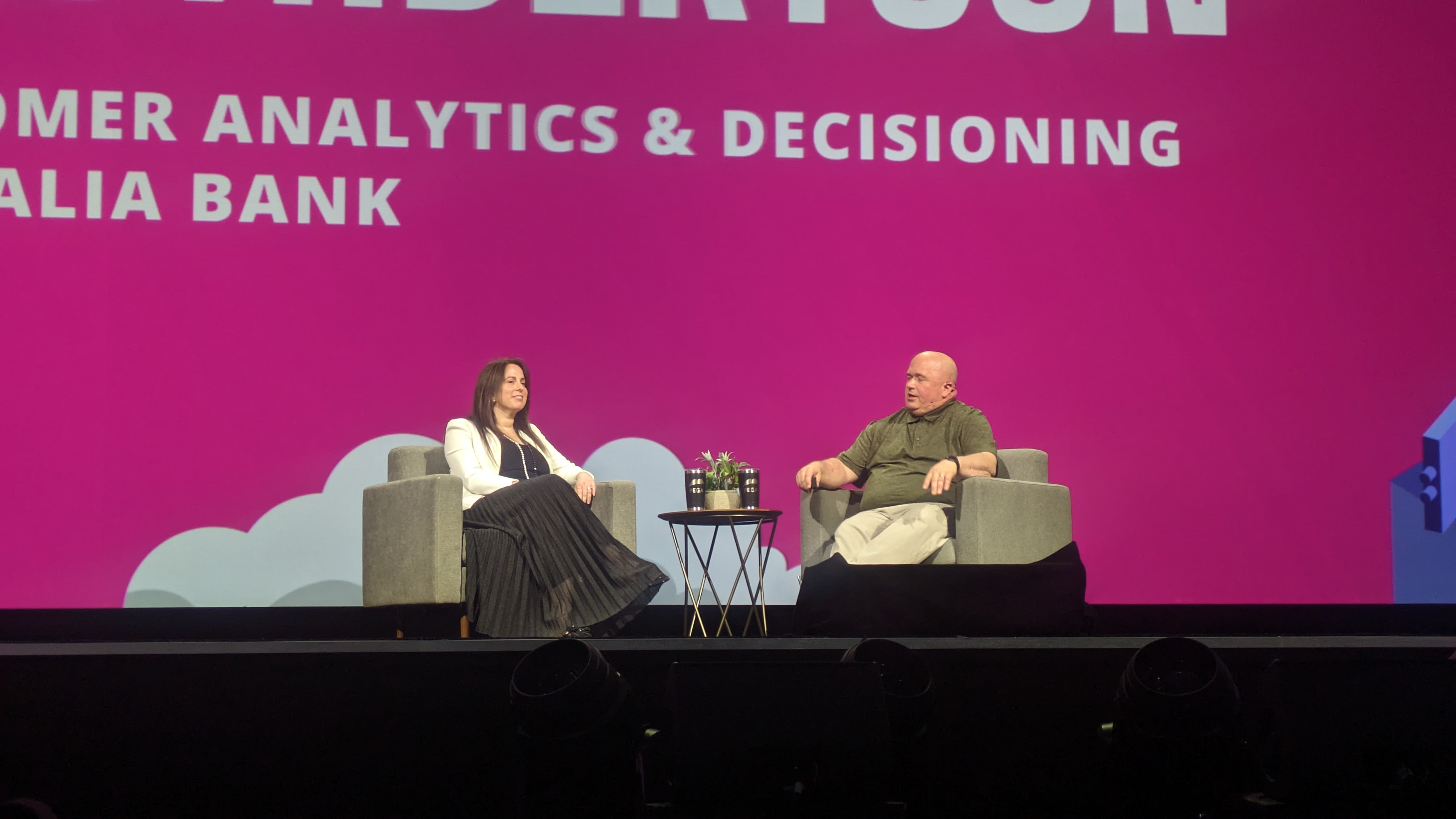
The NAB has 10 million customers, running 100s of customer engagement programs and doing that across dozens of channels, Nolan asks how you navigate this level of complexity.
“Blood, sweat, and tears” Cuthbertson responds. She says the NAB went from 0 to 75% coverage of customer interactions in less than 24 months - pretty impressive.
“You have to get the scale”, Cuthbertson adds, saying depth was an important factor that they did not want to sacrifice at the expense of coverage.
Nolan asks for some examples of this depth. Cuthbertson raises that it could be helping customers keep ahead of their finances with simple things like payment reminders, Fraud and scam prevention through personalized communications.
Another example, and one Cuthbertson is particularly passionate about is engaging with customers, which you can significantly improve with quick wins like celebrating milestones with customers like their birthday or an anniversary, which she says is important because it means the customers actually stop and engage with the service.
Relevance is a key factor here, because you don’t want to be putting stuff in front of the customer that they aren’t interested in, or distracts from their experience. Cutberthson says getting this right generally leads eventually to a lot better sales conversion.
Nolan now wants to move on, predictably onto Pegasystems’ role in this transformation. The first area Pega really helped in was speed, the NAB knew they wanted to deliver value to customers as fast as possible. Bring cloud native, the company was able to get their Pega environments up and running within three weeks of signing the contract.
Second was simplicity, using Pega Cuthbertson says the NAB was able to drive down complexity and take their development cycle down from 12 weeks to 4 weeks.
“So we can develop something more quickly and safely, and we can test it and learn from how customers are interacting with it and optimize as we go.”
Now onto advice for the audience. The first thing is to engage with your frontline early on, for the NAB this meant talking to bankers and asking what they are looking for when speaking with customers.
Secondly, the frontline has a lot of knowledge that needs to be tapped. By making them a piece of this process you will get better offers, actions, recommendations. Codifying this knowledge can help the new employees get up to speed far quicker, showing colleague experience can also benefit from this type of strategy.
Nolan’s last question. Implementing a big brain across the entire enterprise is not a simple task, so how did the NAB measure their success in this endeavor?
Cuthbertson the thing she is most proud of is seeing her colleagues up on the screen today and talking about the impact the brain was having for their business unit and their colleagues, which she says was the most rewarding thing for her.
The future of real-time optimization
Nolan and Louis are back and teasing all the various breakout sessions, product demos, and meet-ups that will be taking place over the course of the day here at PegaWorld.
Now time for Don Schuerman, CTO at Pegasystems, to begin his session, and he gets things started with a shout out to the LGBTQIA2S+ community in Pride month, stating innovation and inclusivity go hand in hand.
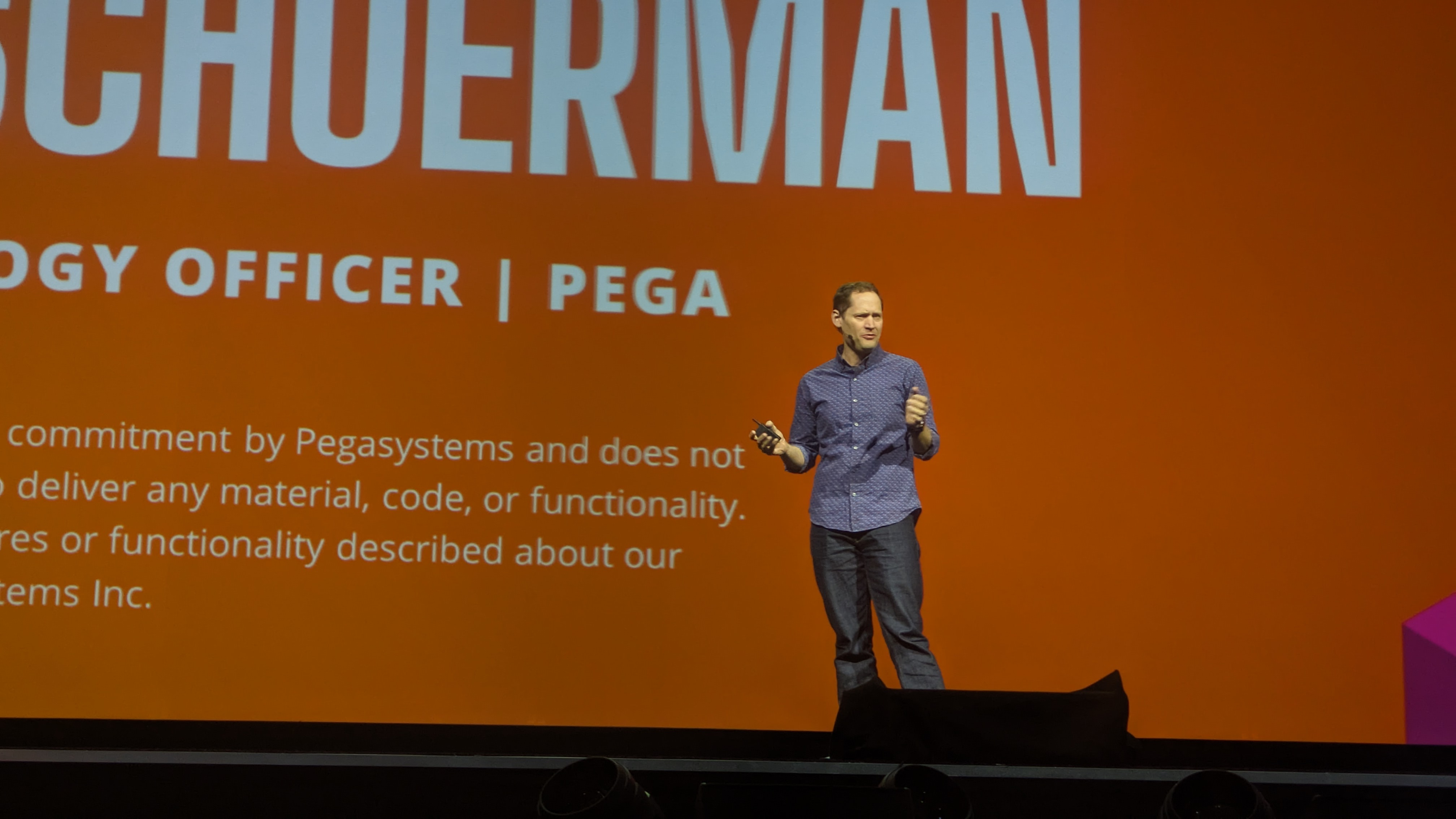
Schuerman starts fairly big picture, discussing the trends shaping the technology and business landscape. He splashes the question, ‘what does the future of AI look like?”.
He says predictions on open-ended questions like this often have an incredibly short shelf life as the rate of change is so rapid. What’s key to the innovation mindset, according to Schuerman, is building for change, which the pithy remark that Pegasystems knows a little bit about - being the company’s mantra.
The company’s rich history in using business concepts and visual processes to design preempted the major shift towards low-code development, as well as with the ongoing boom in interest in applying AI in some transformational ways.
Schuerman says he was really happy to hear from Wenzel at Deutsche Telekom on how Pega’s technologies were helping drive value by powering their business transformation. In a similar vein, he introduces a video from a partner organization, Elevance, a US health insurance provider, who were an early adopter of their workflow solutions.
He says when voice AI was introduced, he says it means customer service agents are no longer bogged down going through documentation and servers and lets them focus on what’s important; talking to the member and providing the best experience for them.
Now Schuerman is back and wants to show the audience a *hidden feature* (he uses air quotes here) within the Blueprint kiosks that have been littered around the showfloor here at PegaWorld labelled ‘’show me the AI future’.
A bit of slapstick ensues, and he ‘crashes’ the kiosk. Now he brings up a mobile app for his life insurance provider, U+ Insurance, to see if he is covered in case Pegasystems’ chief product officer, Kerim Akgonul threatens him for breaking his treasured device. This looks like it might be contrived way to show how all of Pega's AI capabilities come together to provide a seamless and personalized customer experience.
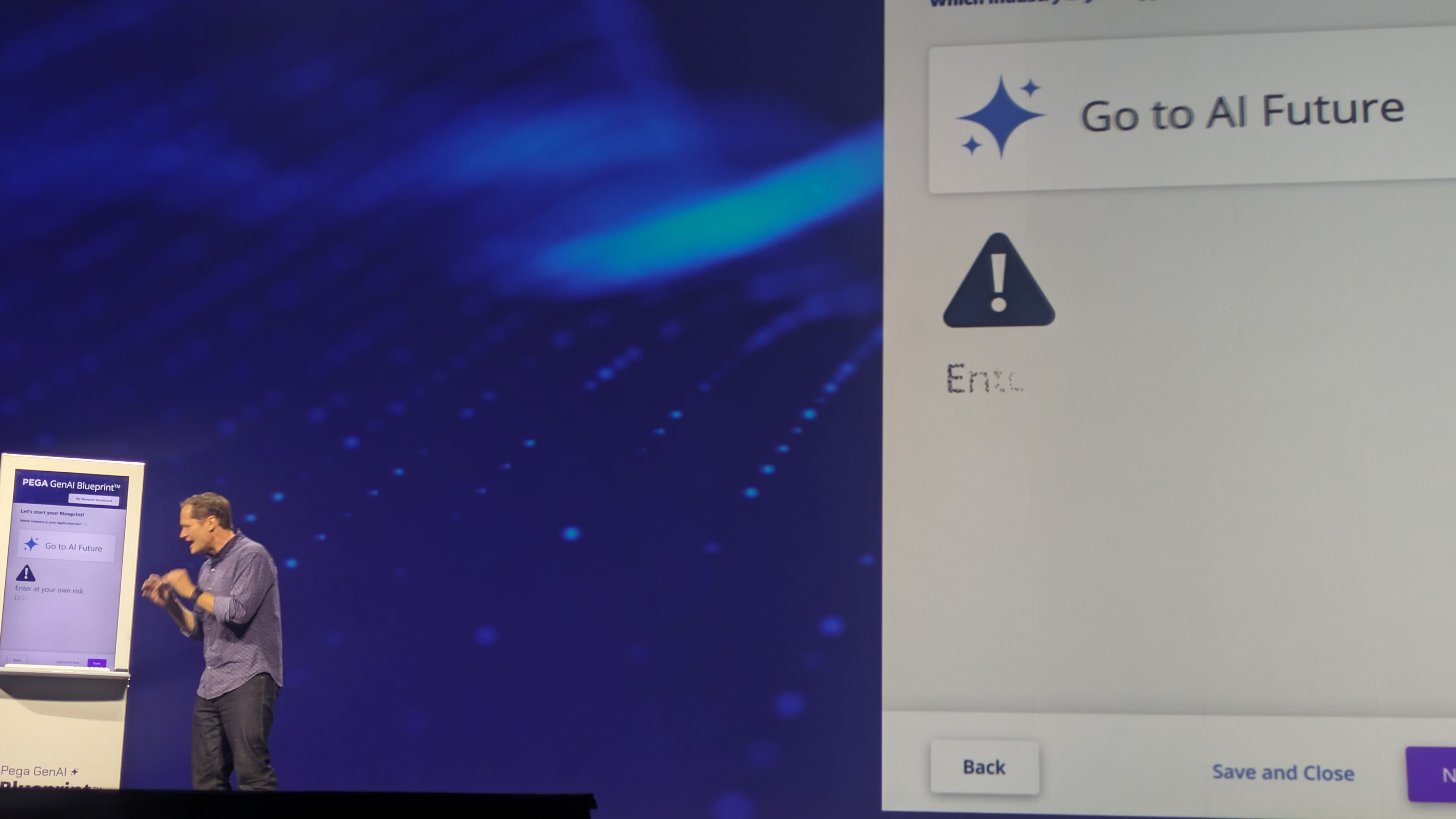
Coordinating with an AI agent, he is able to select a preferred repair technician, and Schuerman uses this example to show how AI can change the customer experience. Schuerman introduces Anu Shah, director of Specialist Solutions Consulting at Pegasystems to explain some of the background processes that made this possible.
First the tool used GenAi to search through U+’s documentation to see if Schuerman was covered for ‘kiosk damage’ under his umbrella policy. Next it creates a case which leverages an external LLM to do image identification to identify the type of kiosk he broke. Next the statistical AI in Pega’s Customer Decision Hub, using Schuerman’s identity, previous behavior, and what others like Schuerman did in similar situations.
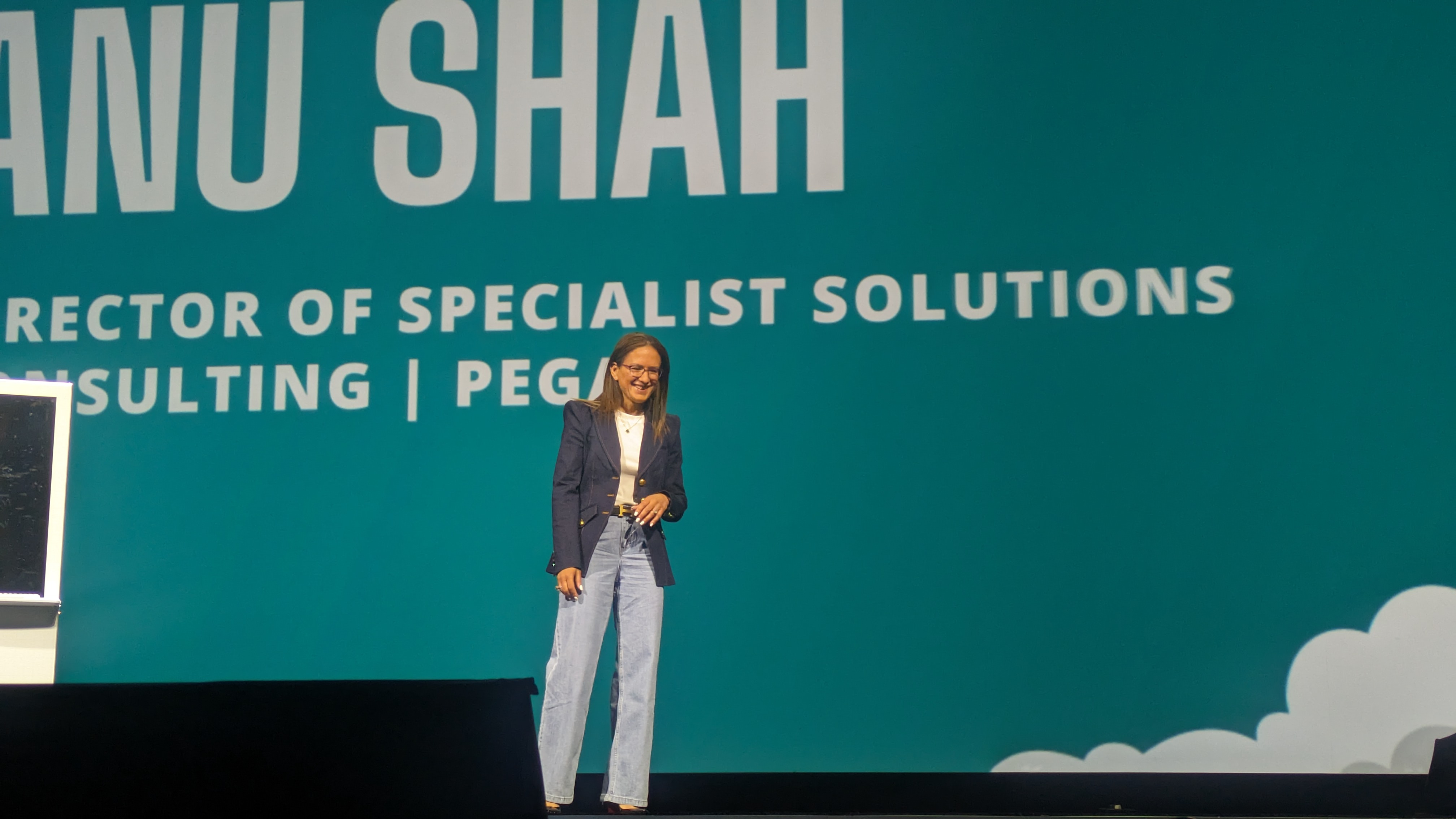
Shah is continuing through the entire lifecycle for the case created for Schuerman, across U+ Insurance’s various channels, passing the case on to a claims adjuster to help handle the claim. The claims adjuster is assisted with Pega’s generative AI Coach, which uses U+’s best practices to advise the agent to on how best to proceed.
Schuerman stops to note that as the case moves between channels and screens, and systems, it embodies the center-out approach discussed by Trefler yesterday, where the process is designed around the work itself, not the channels, screens or people.
To cap off this sequence, a technician is on stage and the kiosk is easily brought back online. Now Shah summarizes the various AI processes that took place in this sequence. These include leveraging its enterprise knowledge, powered by GenAI and RAG models, which also provided real-time context and image identification. Decisioning AI was harnessed to provide workflow predictions and the next best actions for the claims adjuster.
This, again, is a good example of the center-out strategy around business processes, where these intelligent capabilities cannot be siloed by have to be interconnected in order to provide the most seamless experience for the customer.
Shah leaves thee stage and Schuerman drills down on the bigger picture here."The future is going to happen because we drive continuous real-time optimization into our business because we find pragmatic ways to apply this AI technology that leads to step changes in how we innovate".
He refers back to his address last year at PegaWorld 2023, where he encouraged all attendees to use their App Studio solution. He cites a study that determined App Studion and the Pega Infinity Plaftorm building in Pega was 7.8 times faster than building in Java, and that was before Blueprint.
Schuerman wraps up by asking the audience to imagine if every one of them took one blueprint back to their organization, and the productivity and process enhancements that could be unlocked as a result.
"One blueprint could unlock billions of dollars of value for our organizations... and I want you to come back here next year and tell those stories at PegaWorld 2025".
And with that, Schuerman brings the second day keynote to an end.
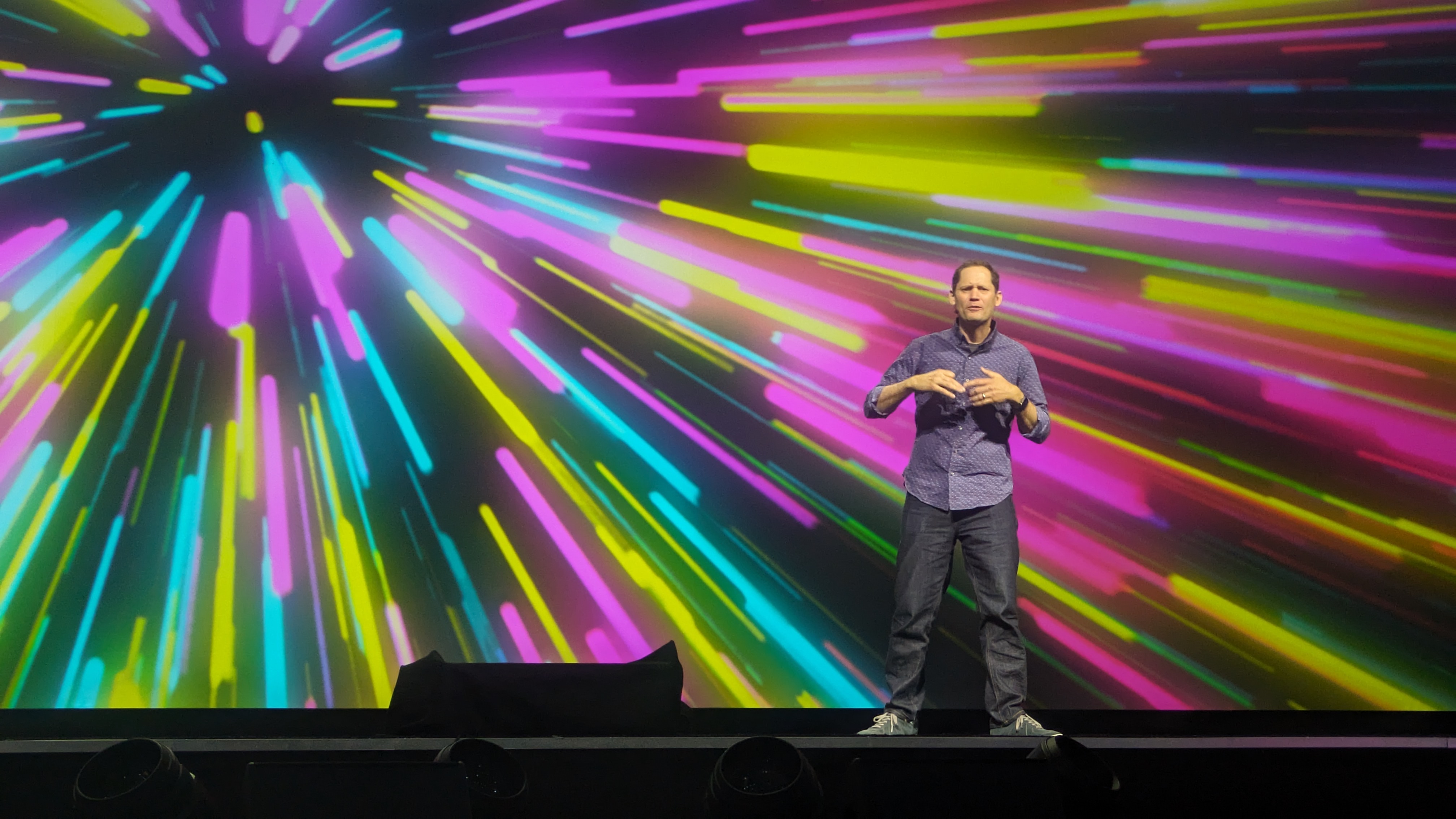
That’s it for the keynotes from PegaWorld Inspire 2024, the violinist is back on stage and the crowd drains out of the auditorium. We hope you enjoyed our live coverage from the ground here in Las Vegas, here’s a quick summary of the major announcements and themes we covered over the last two days:
• Pegasystems expanded its generative AI framework from OpenAI, hosted on Azure, giving users the freedom to leverage the models from AWS Bedrock, Google Cloud, and Anthropic.
• Further enhancements to Pega GenAI Blueprint including an improved user experience, legacy transformation accelerators, live application previews, data model generation, improved collaboration, and Pega templates.
• Dynamic generative AI tutor Socrates, that uses a two-way interactive dialogue that is personalized to the student in real time to super power developer productivity.
